
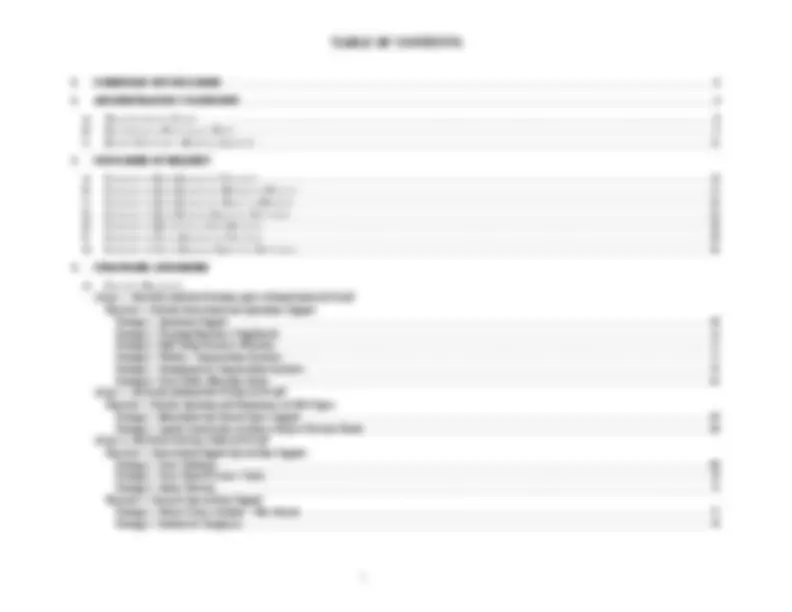
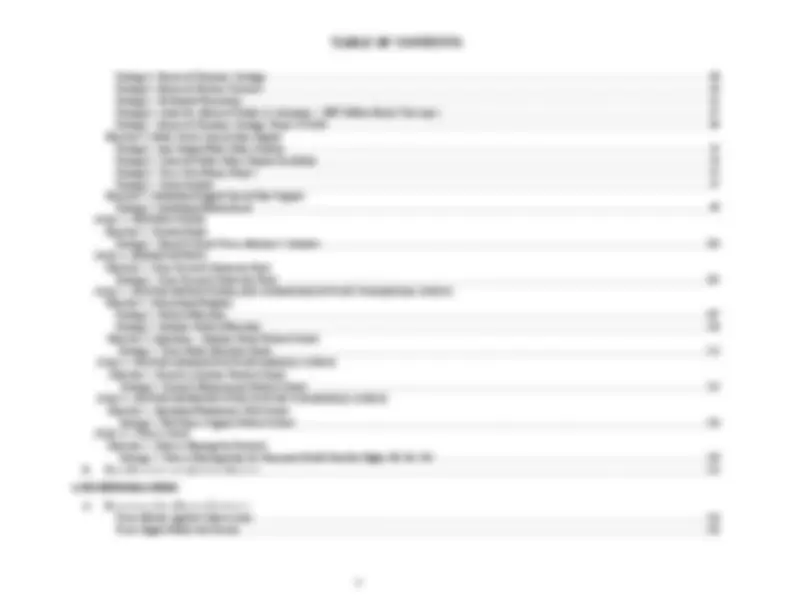
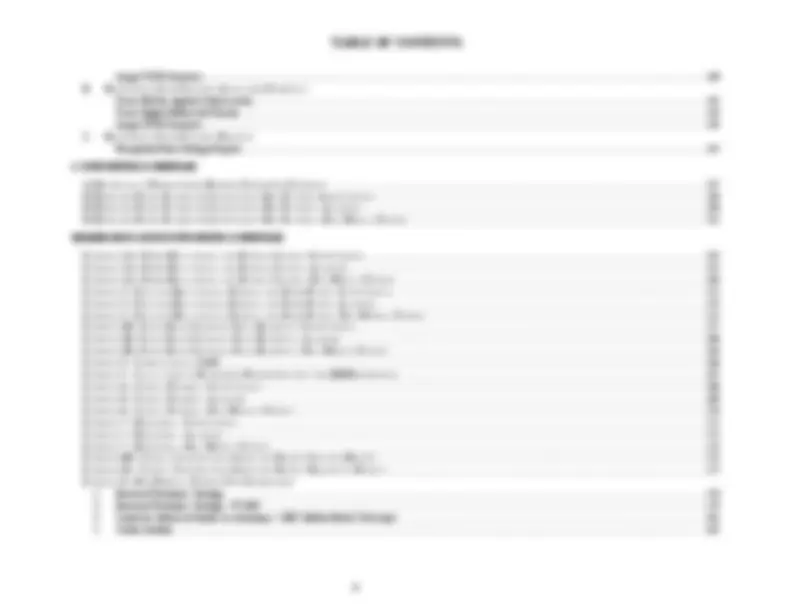

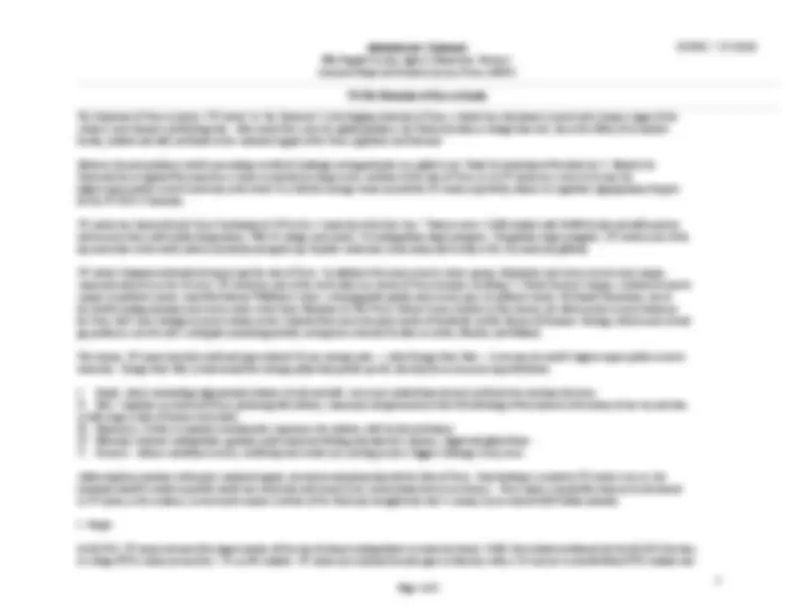
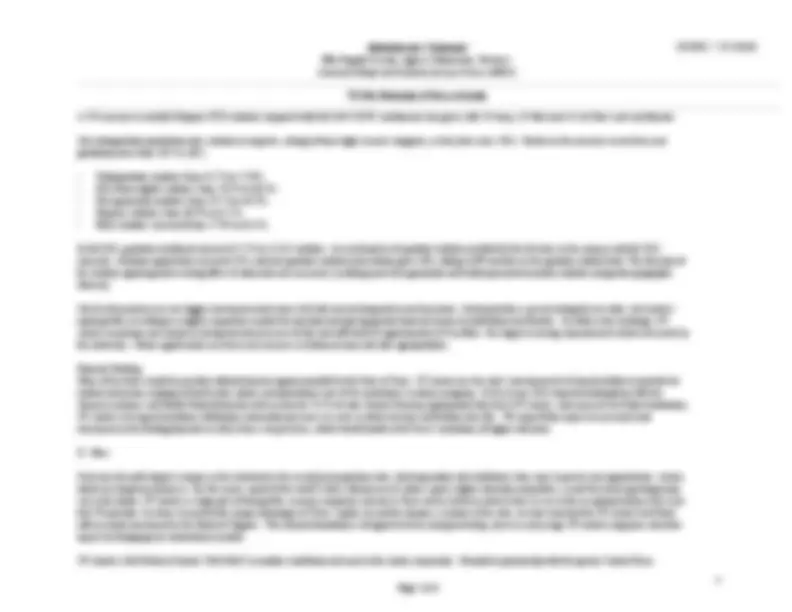
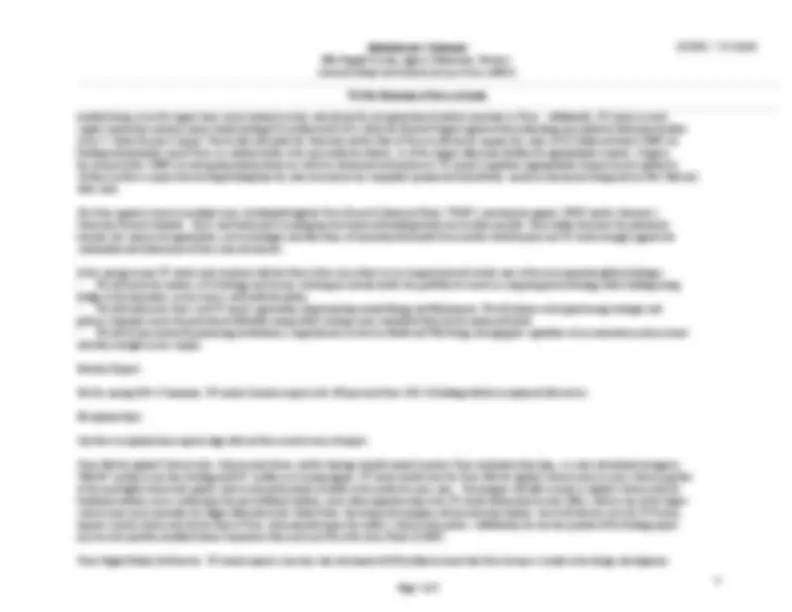
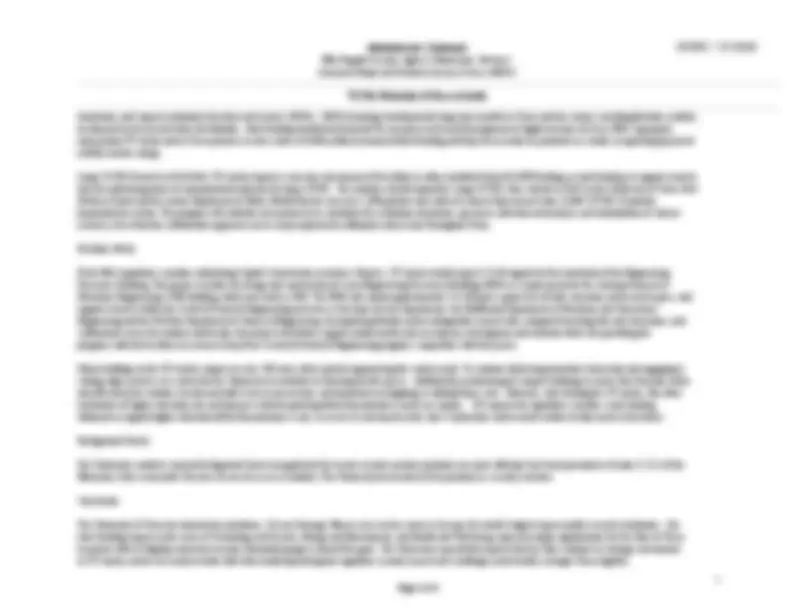
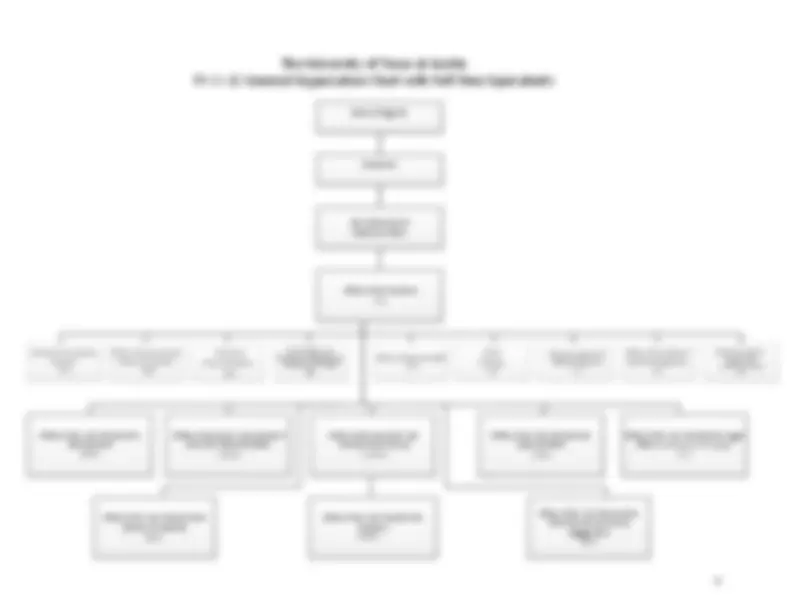
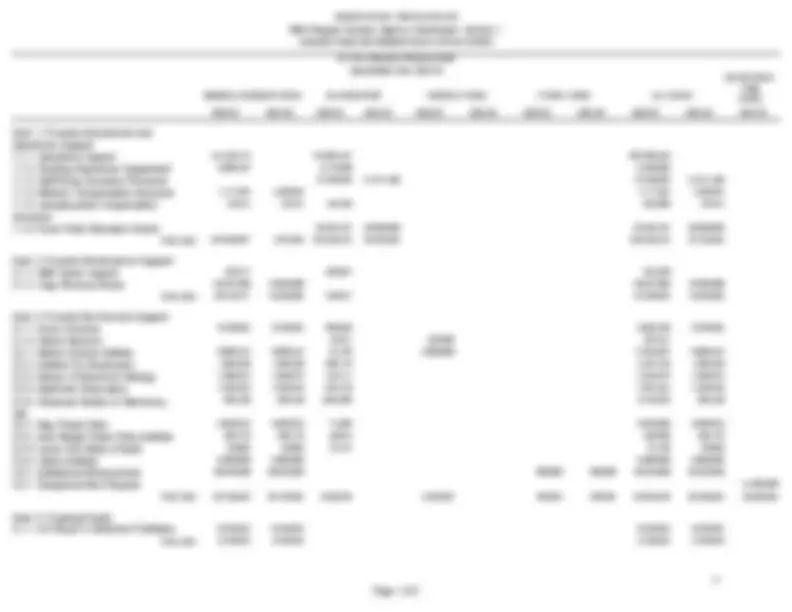
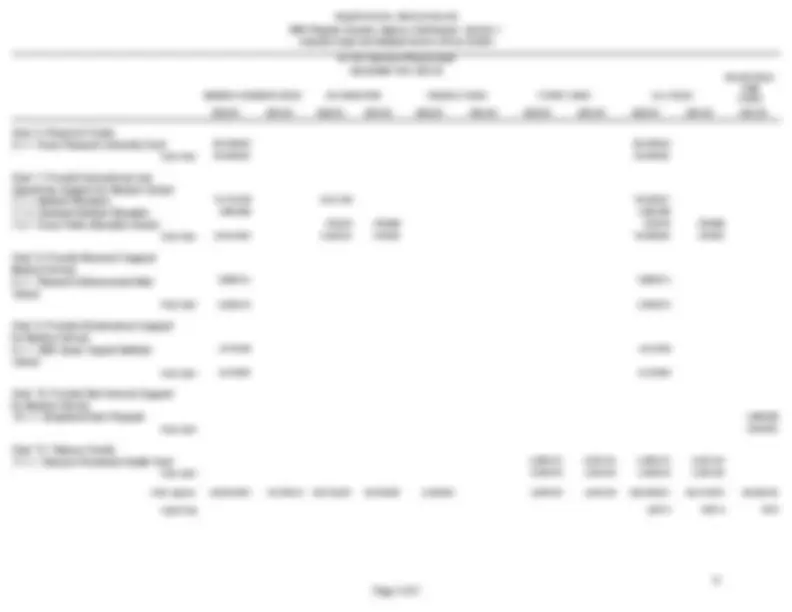
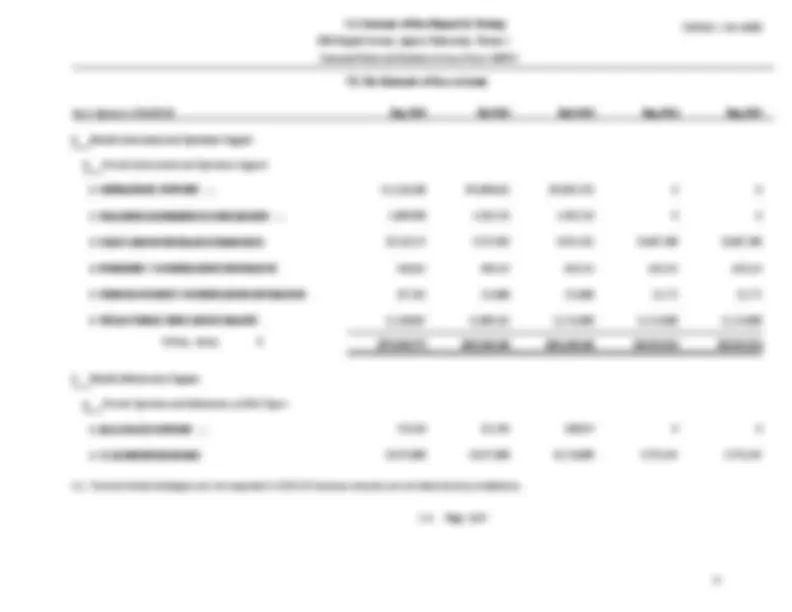
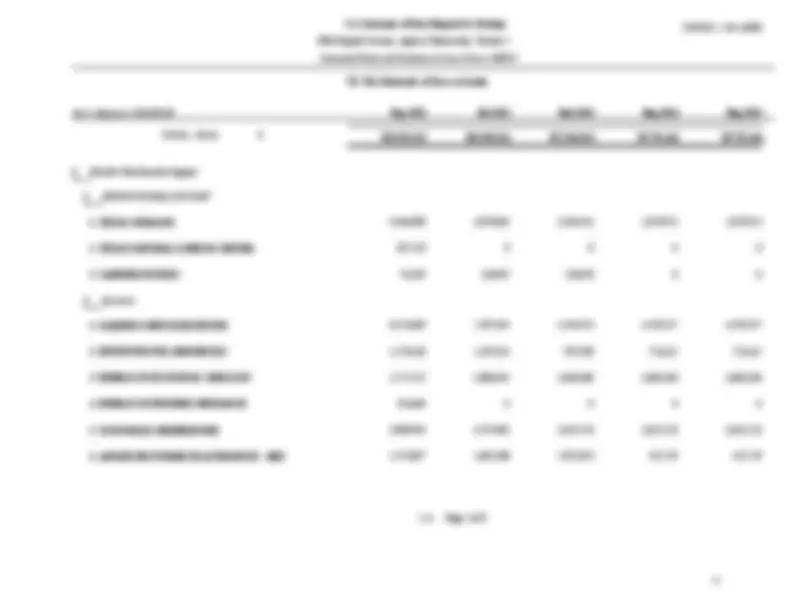
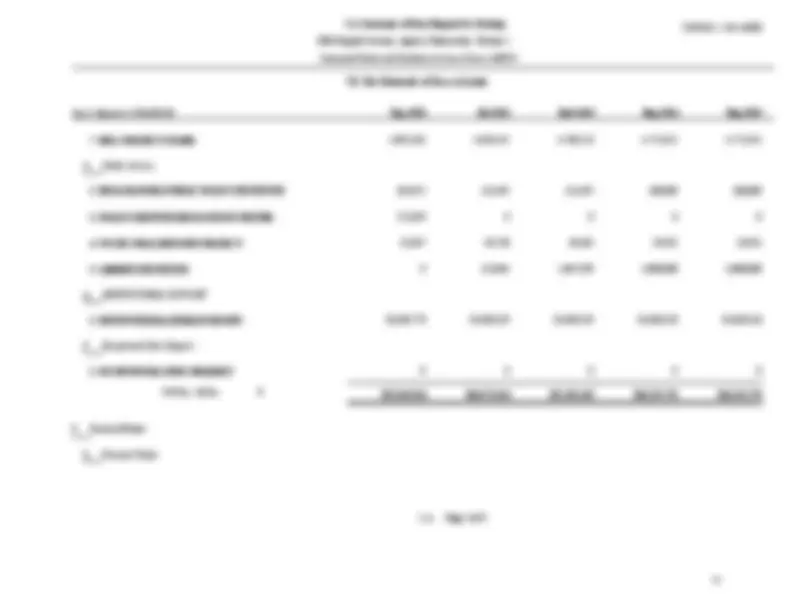
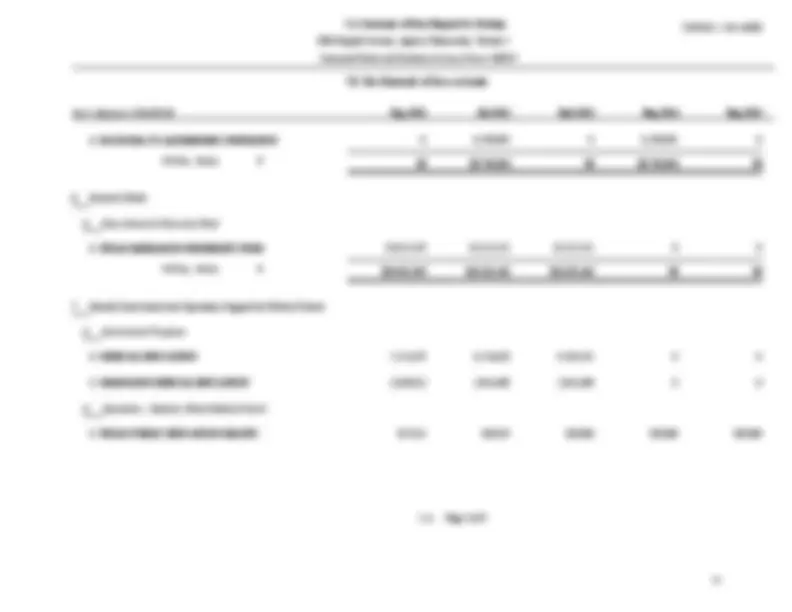
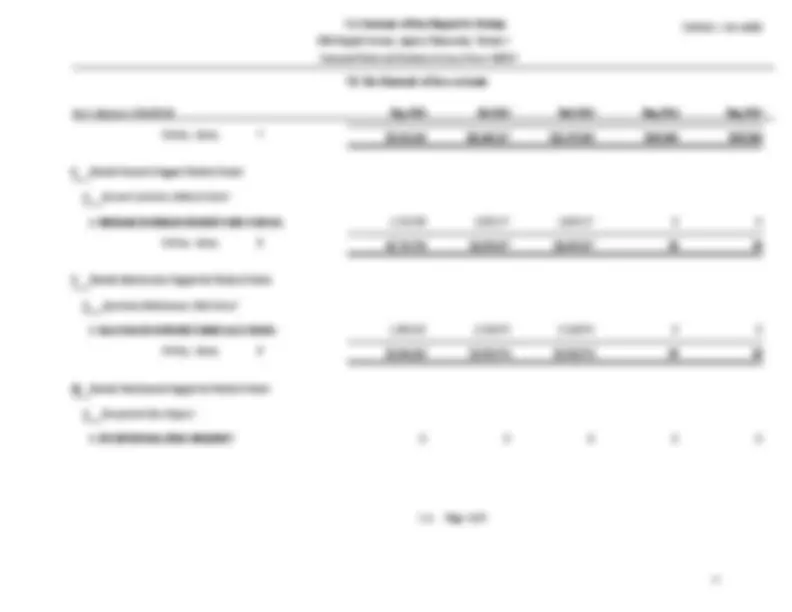
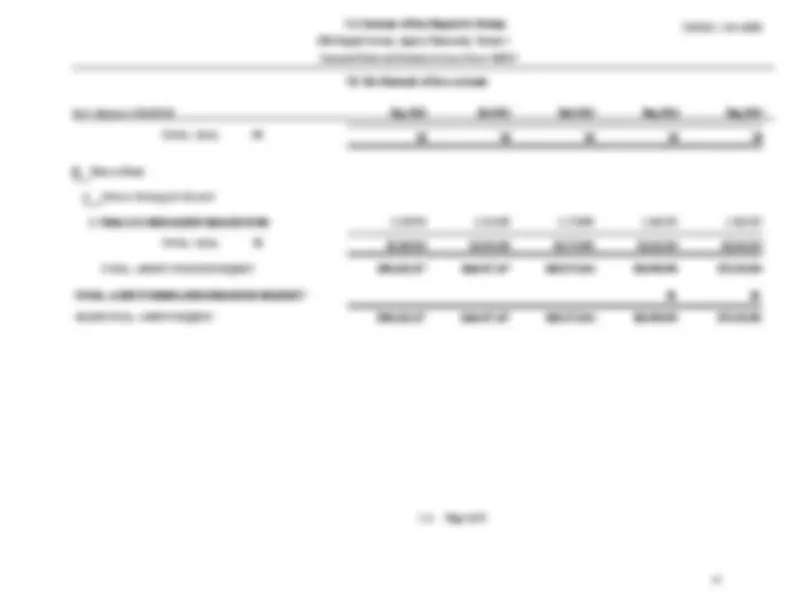
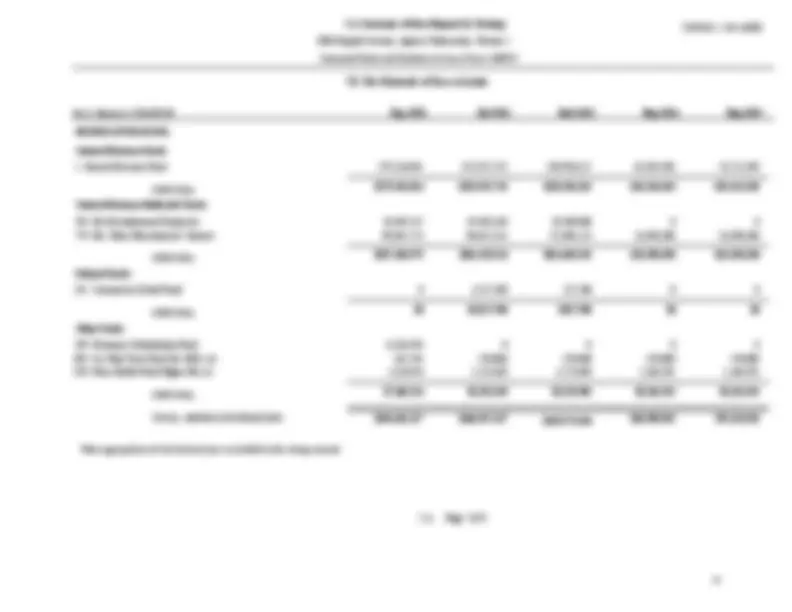
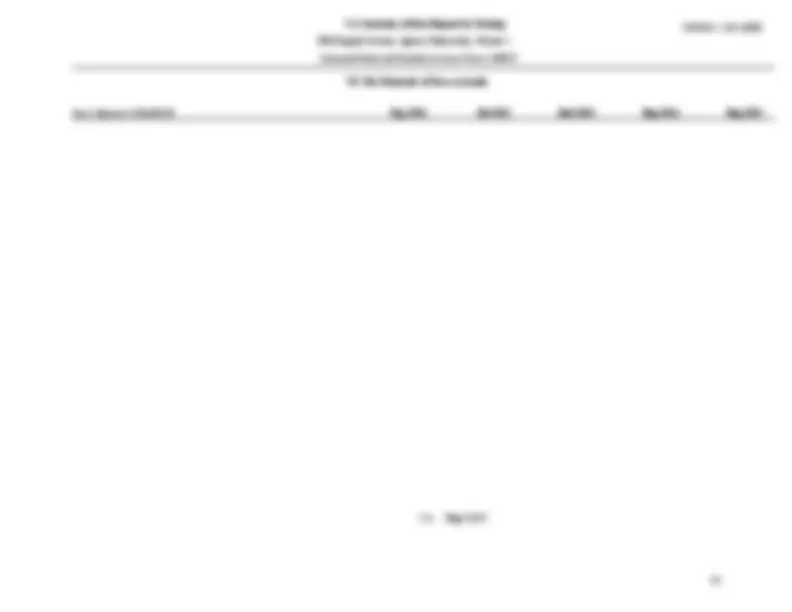
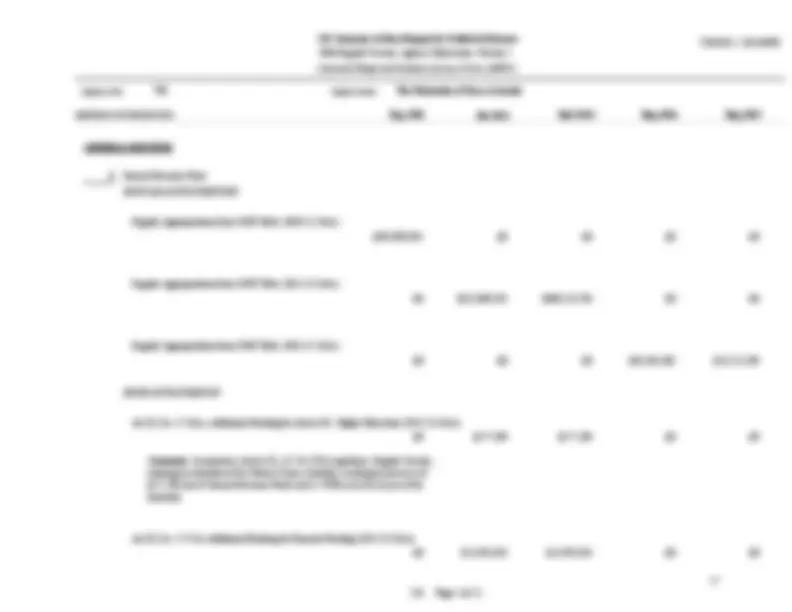
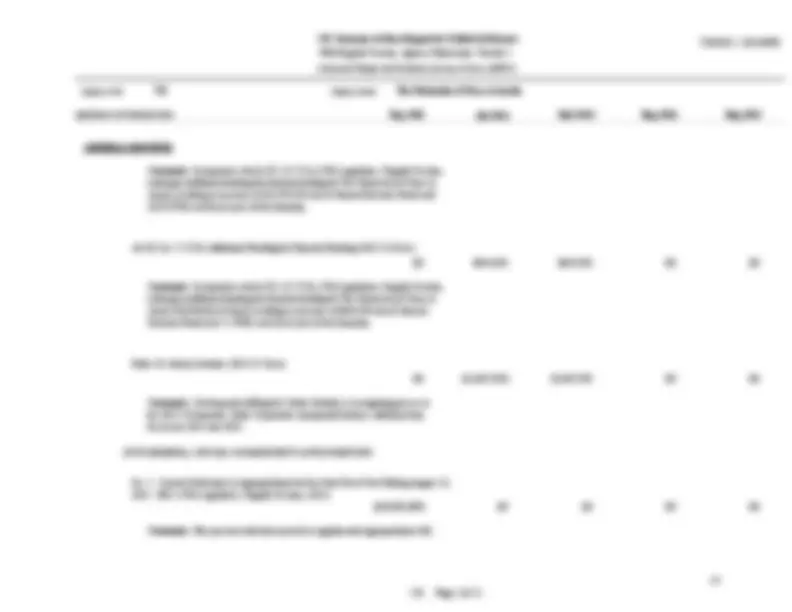
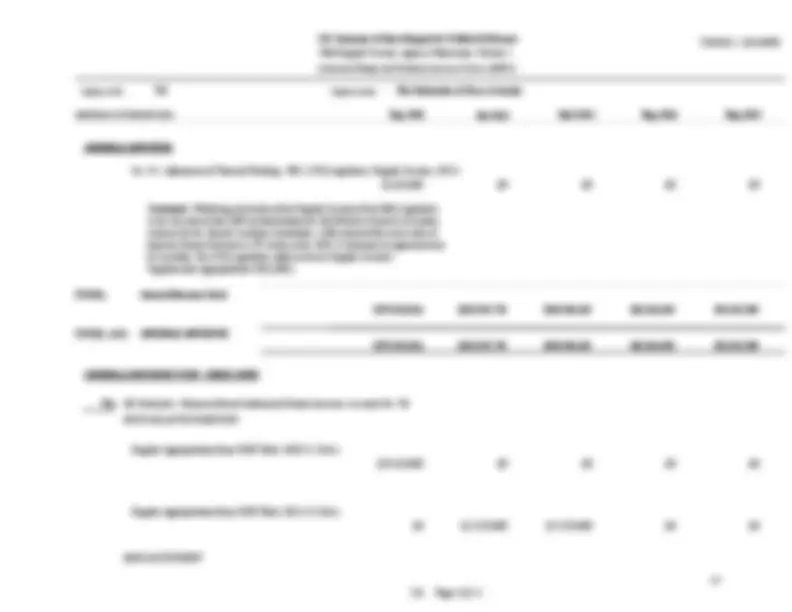
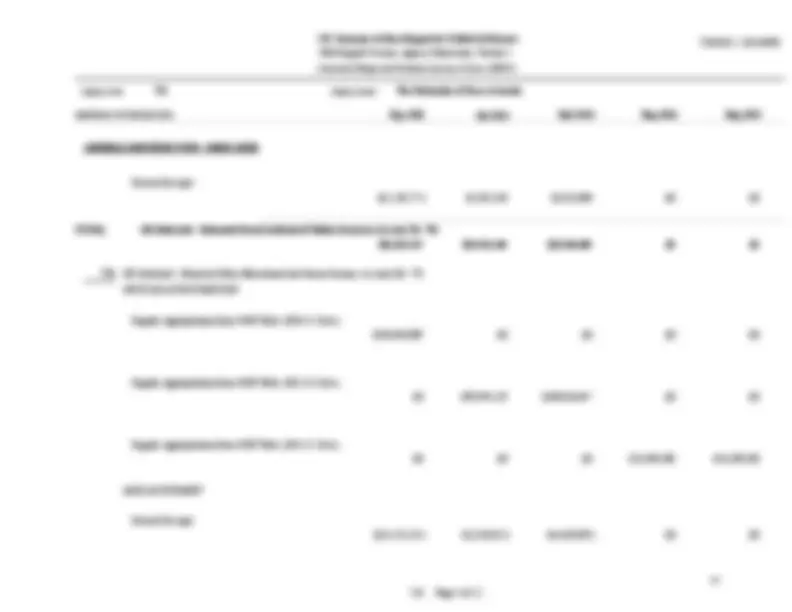
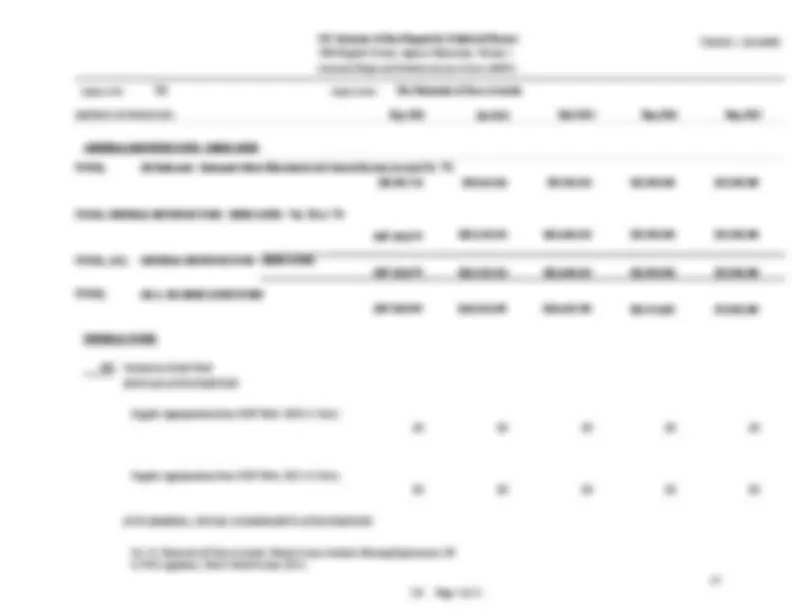
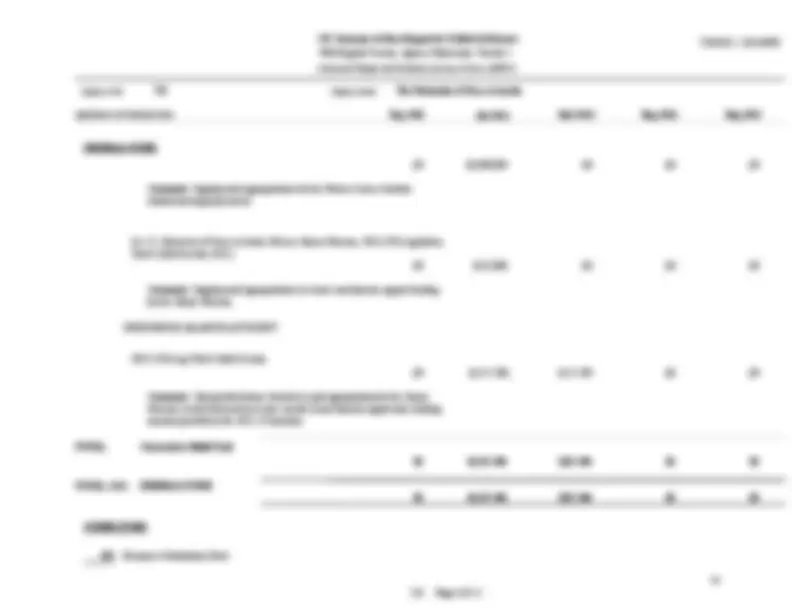
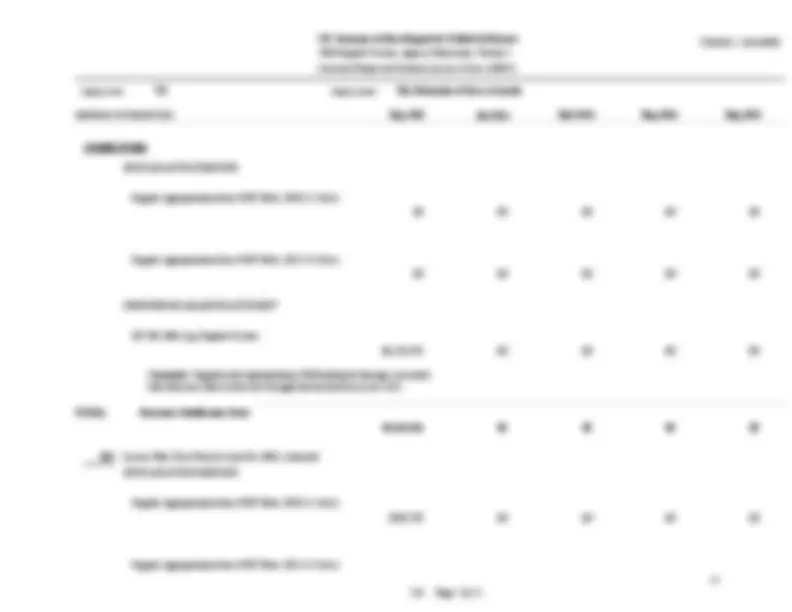
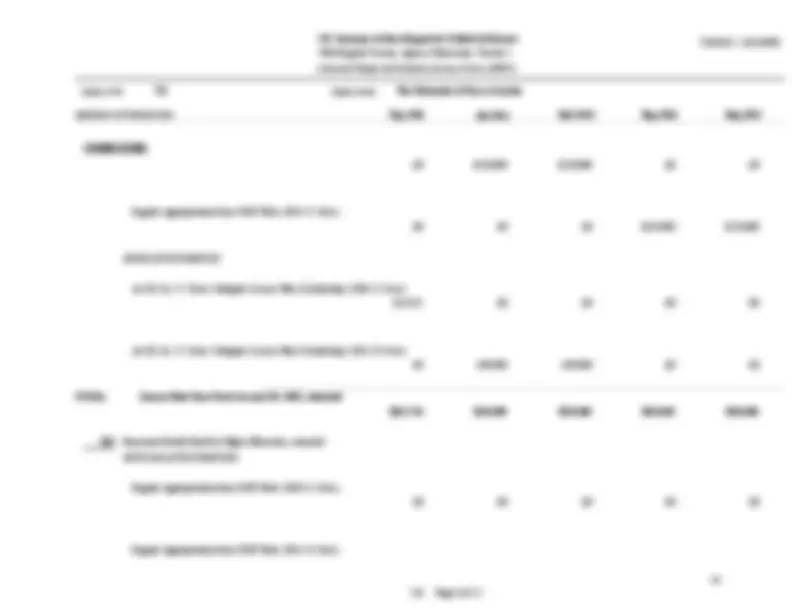
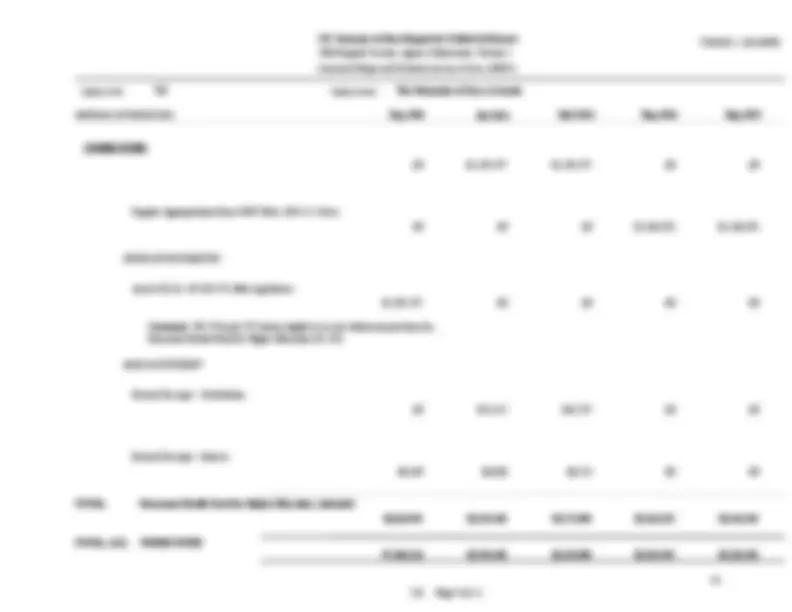
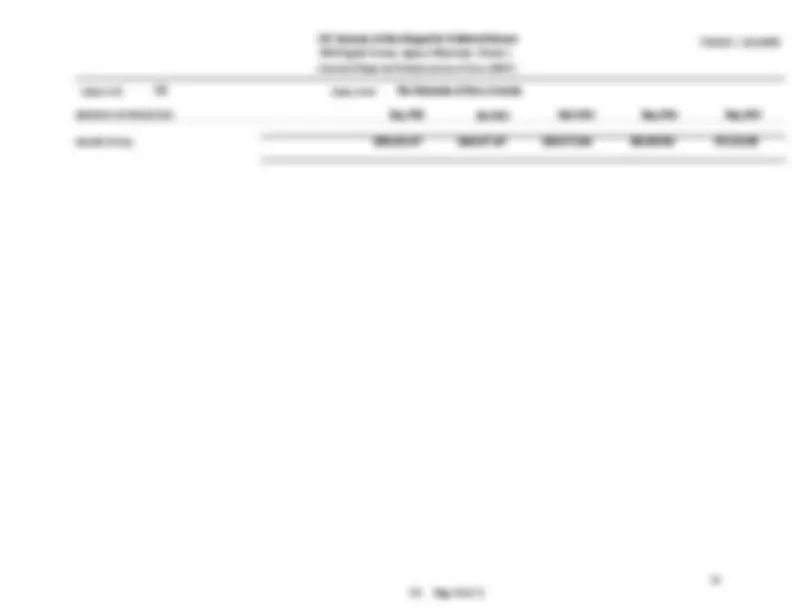
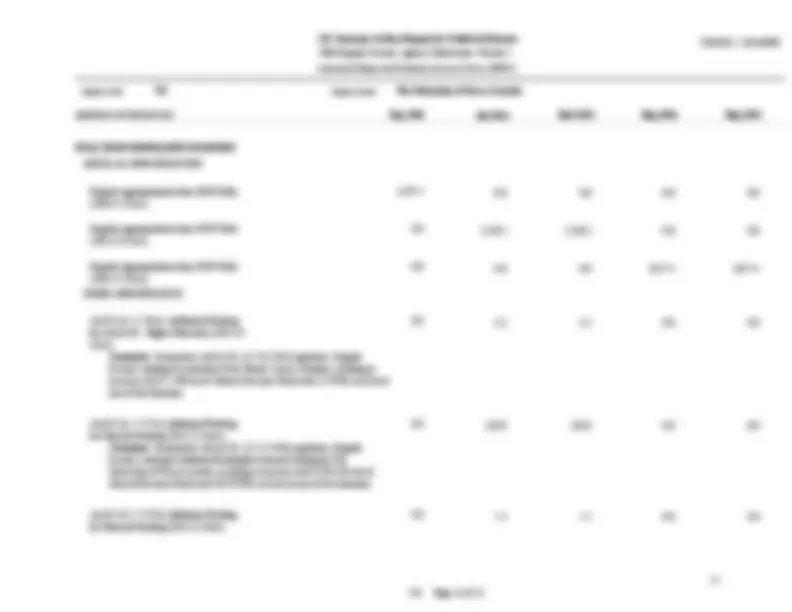
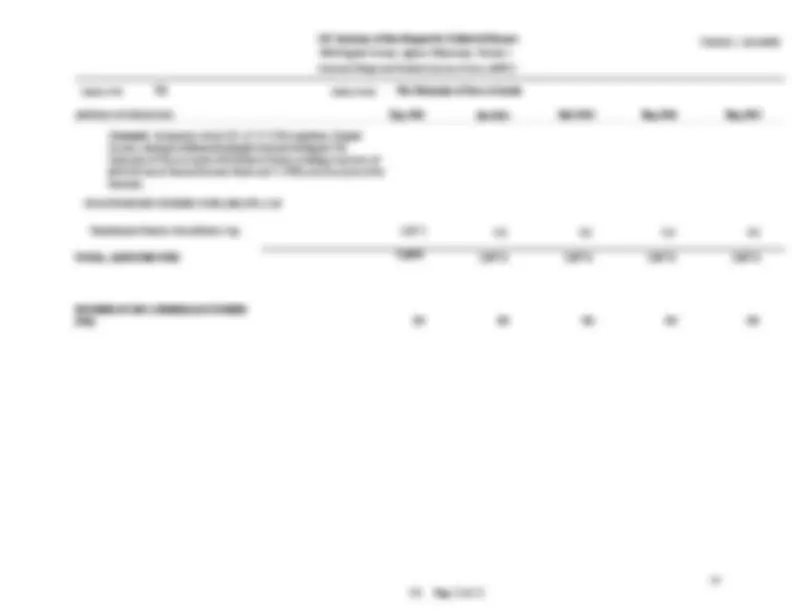
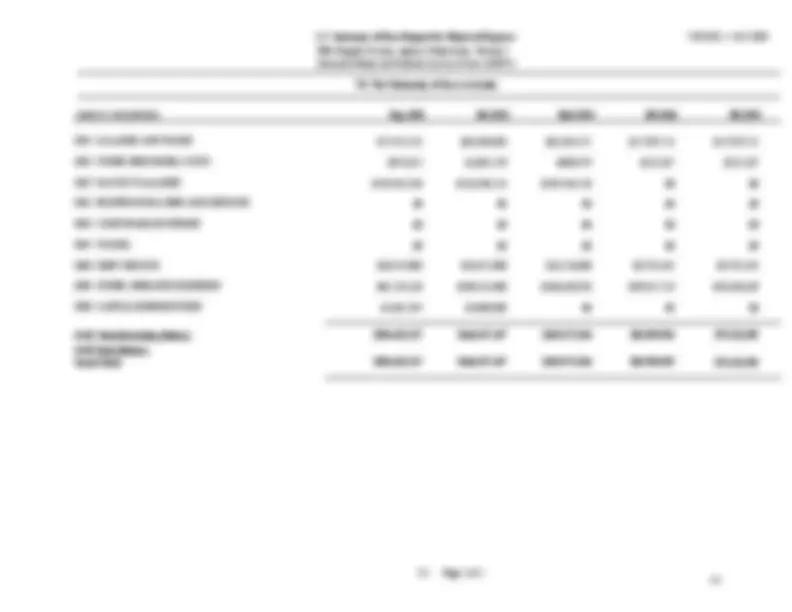
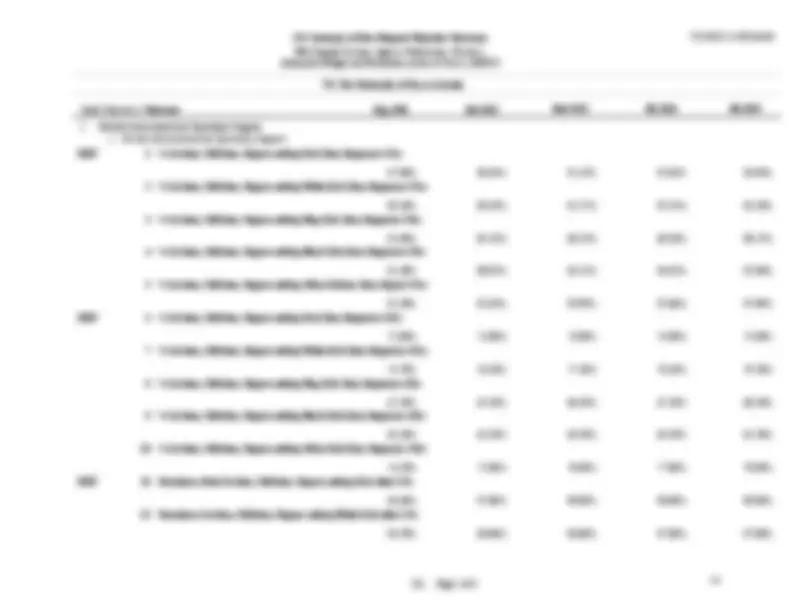
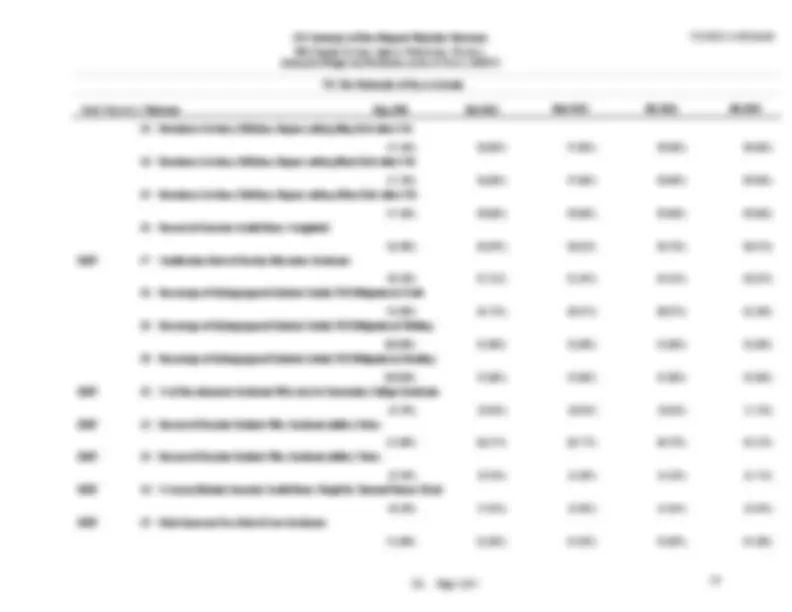
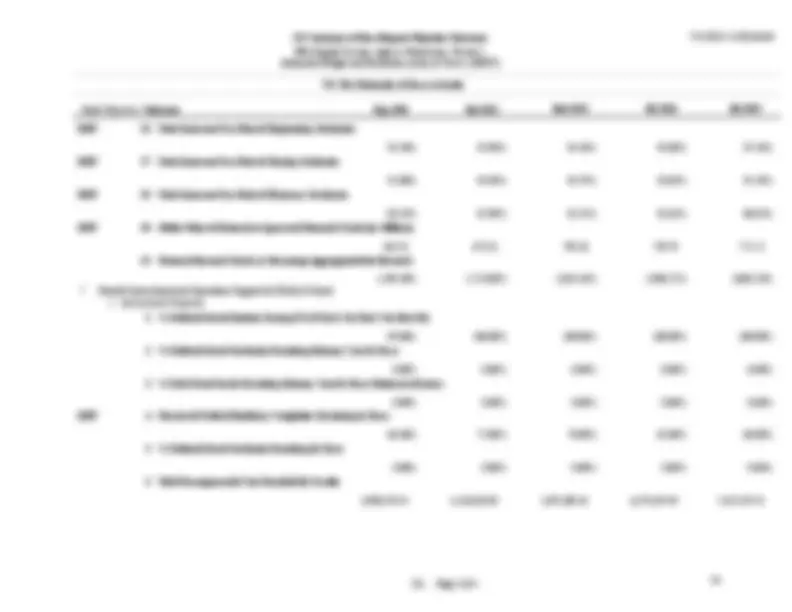
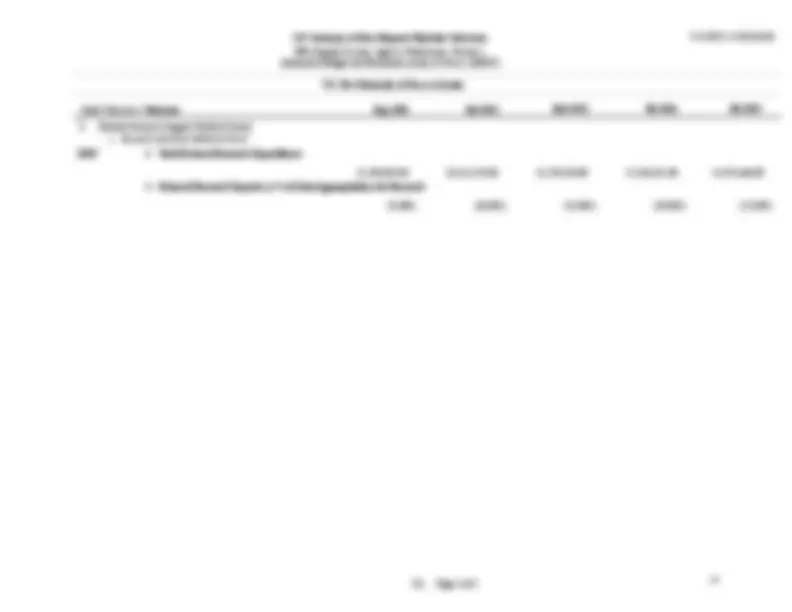
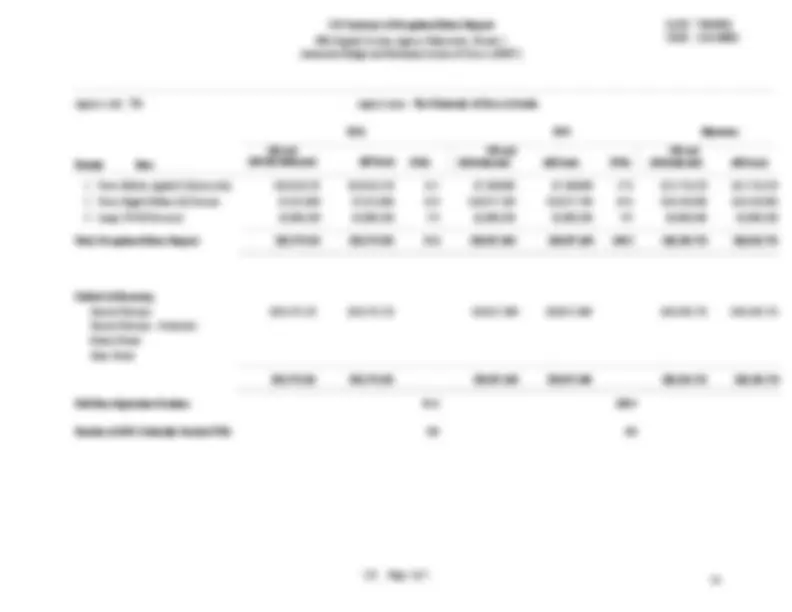
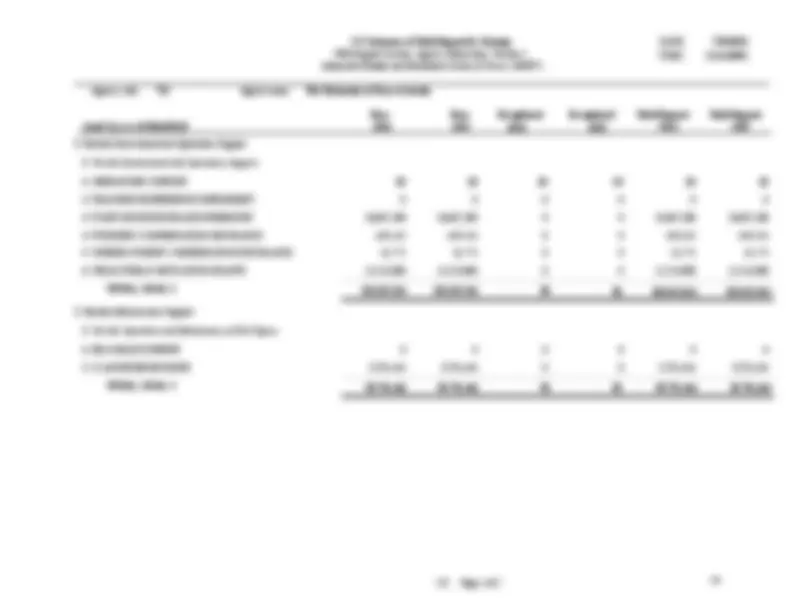
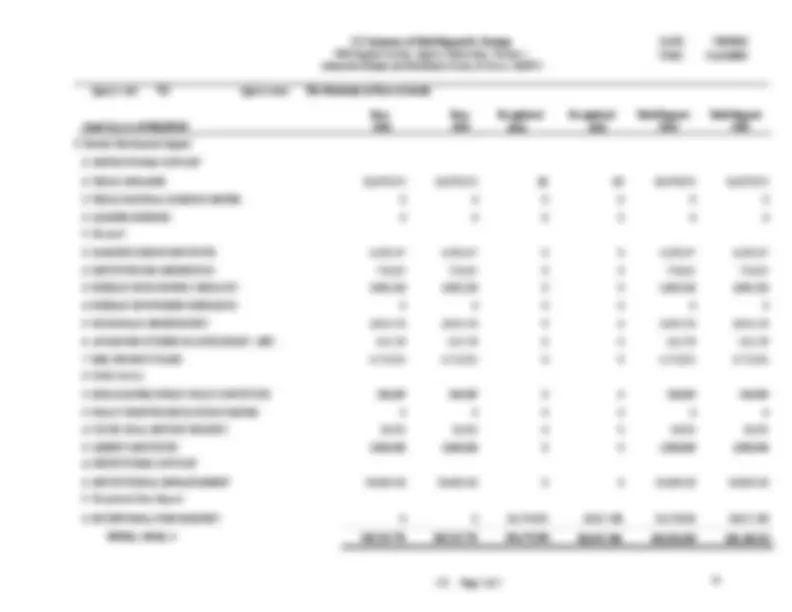
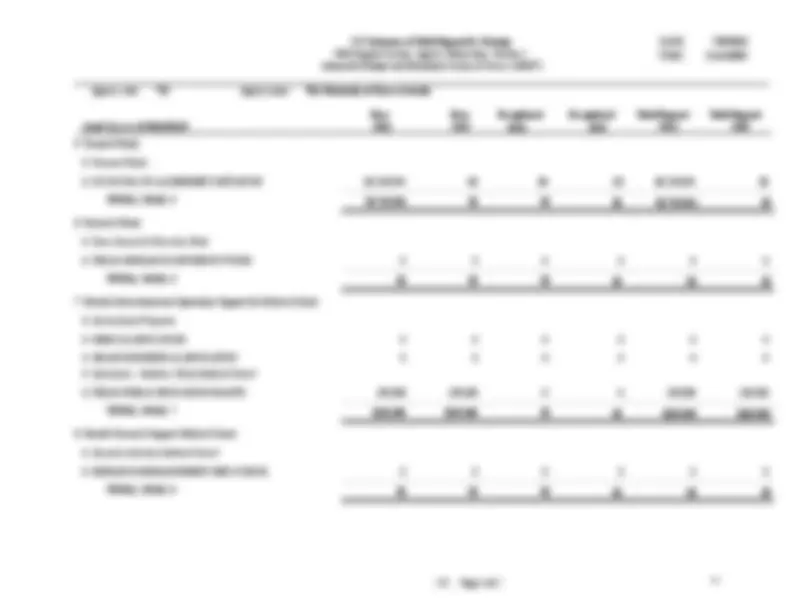
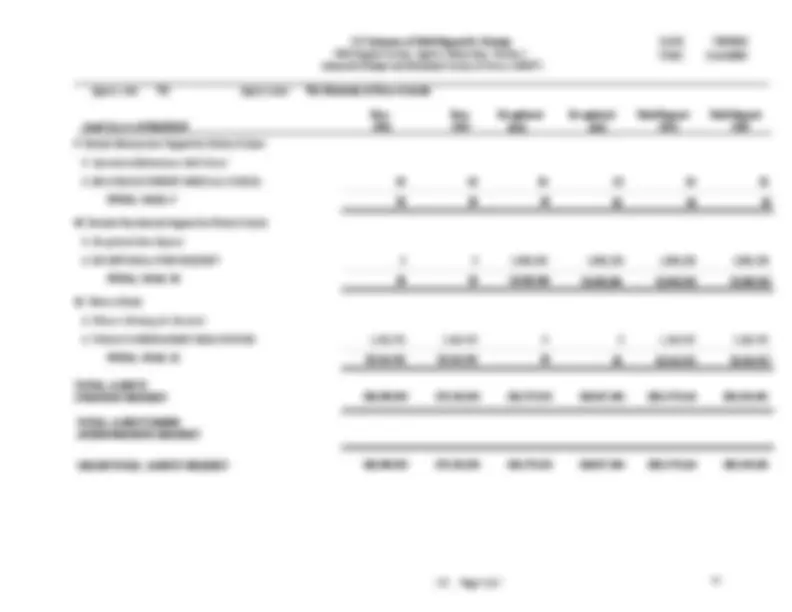
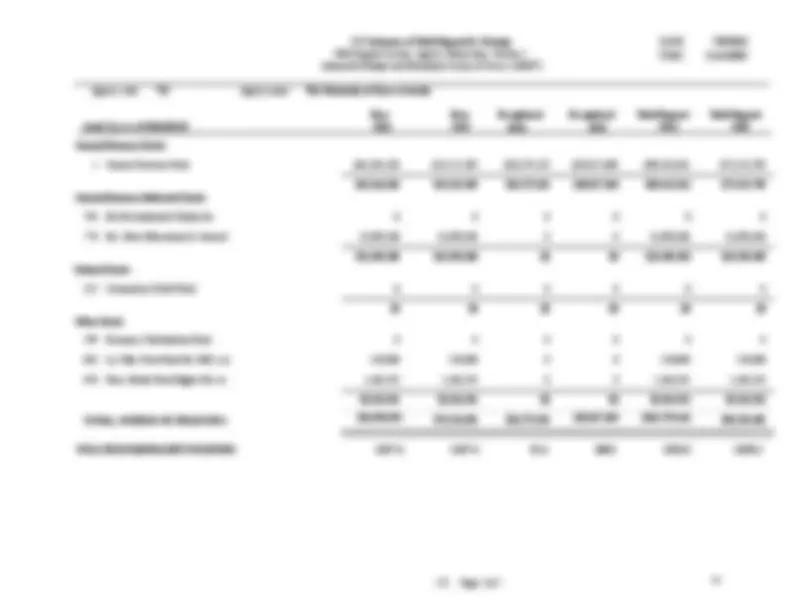
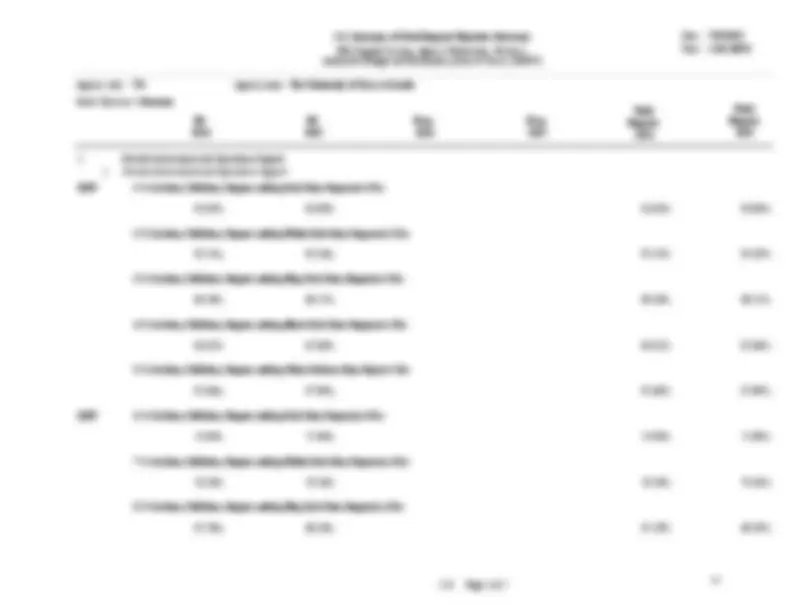
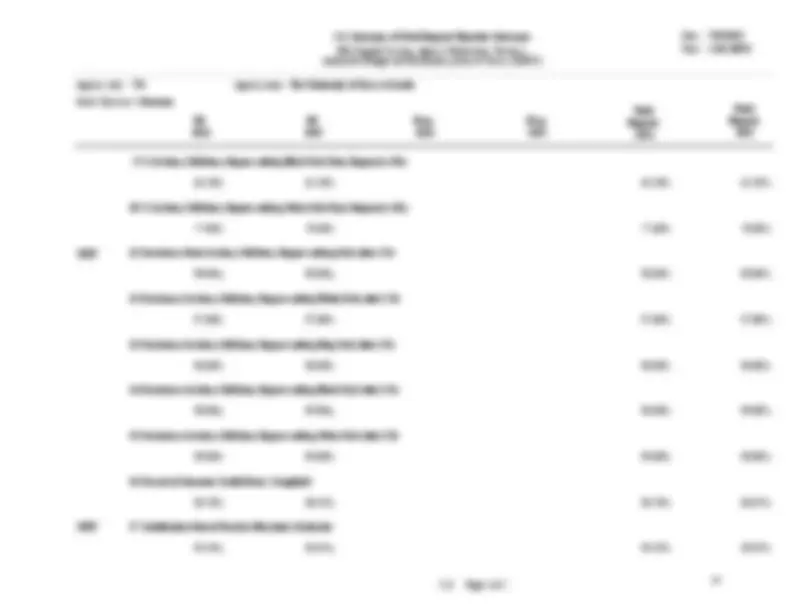
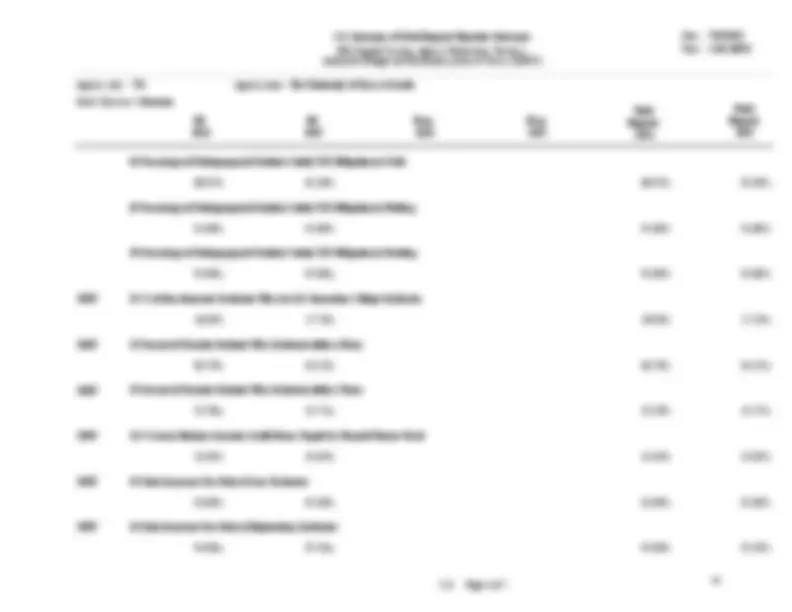
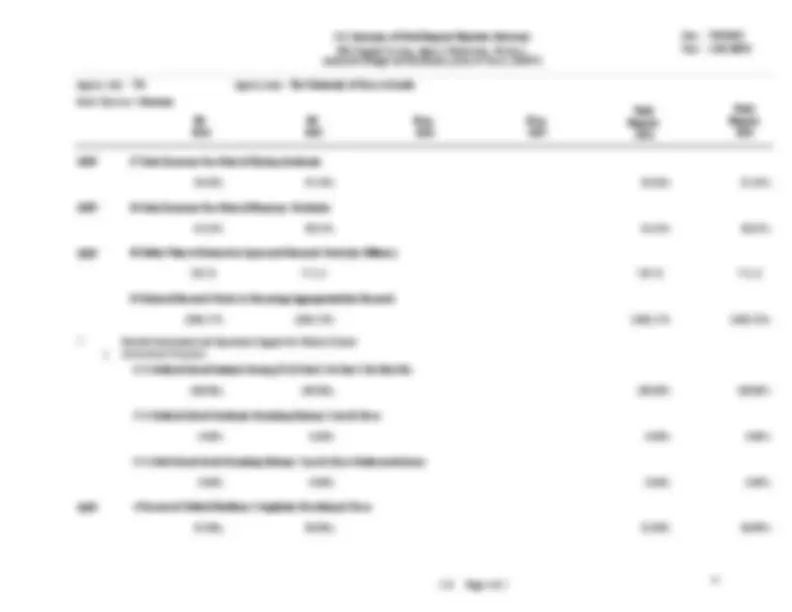
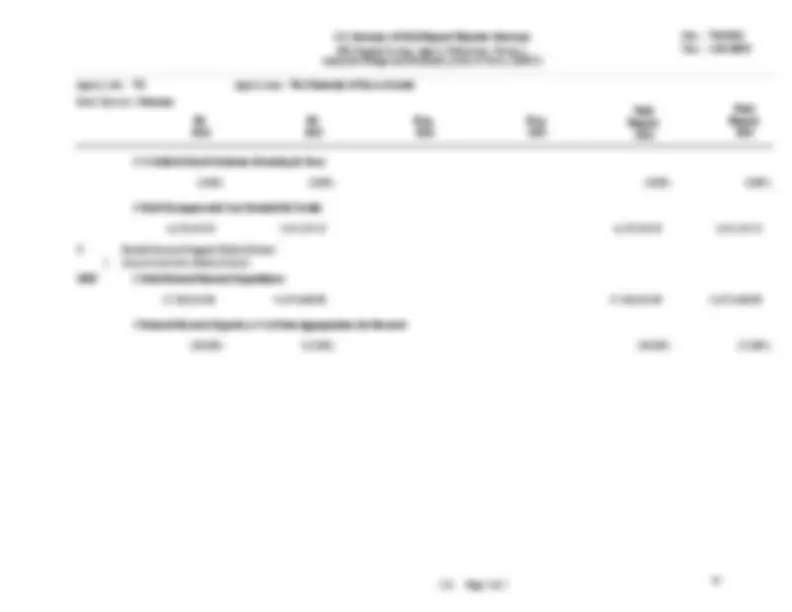
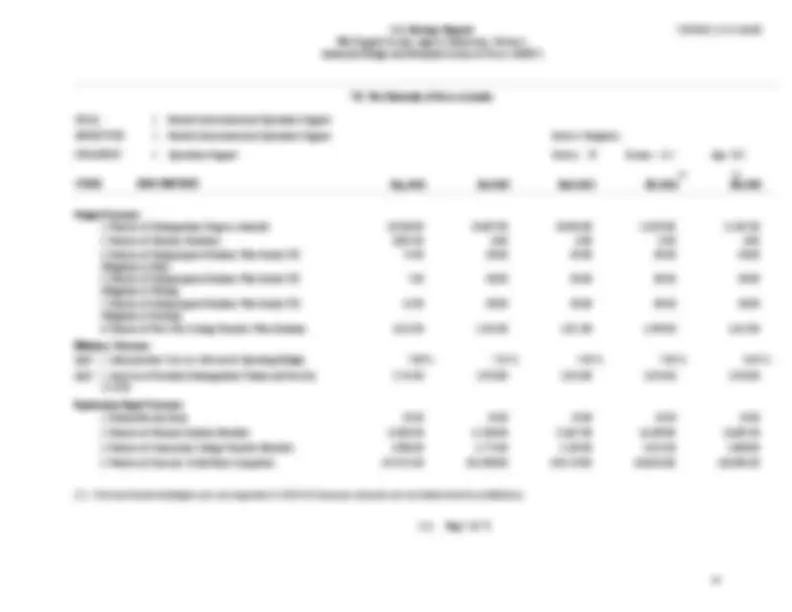
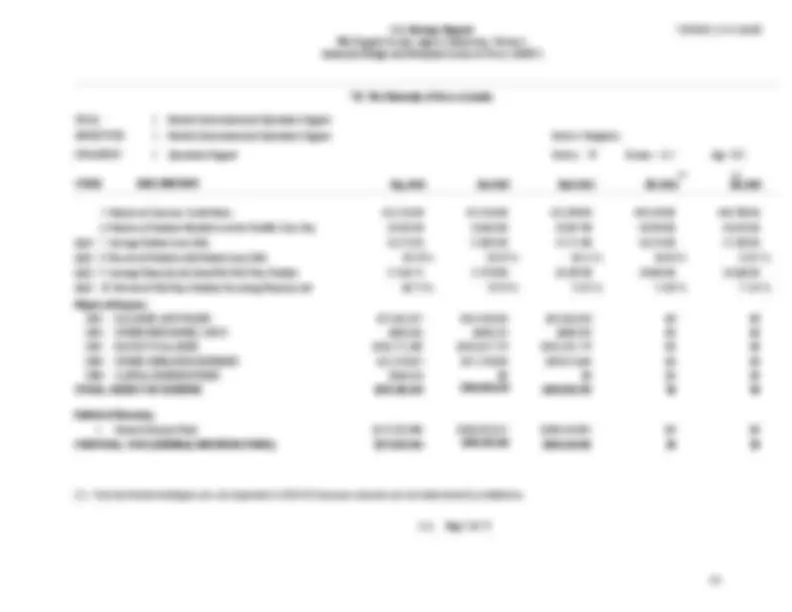
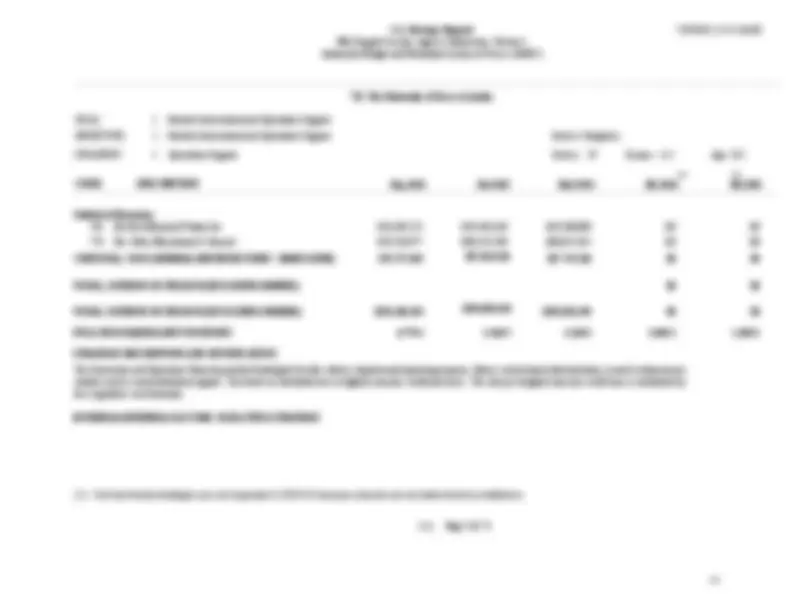
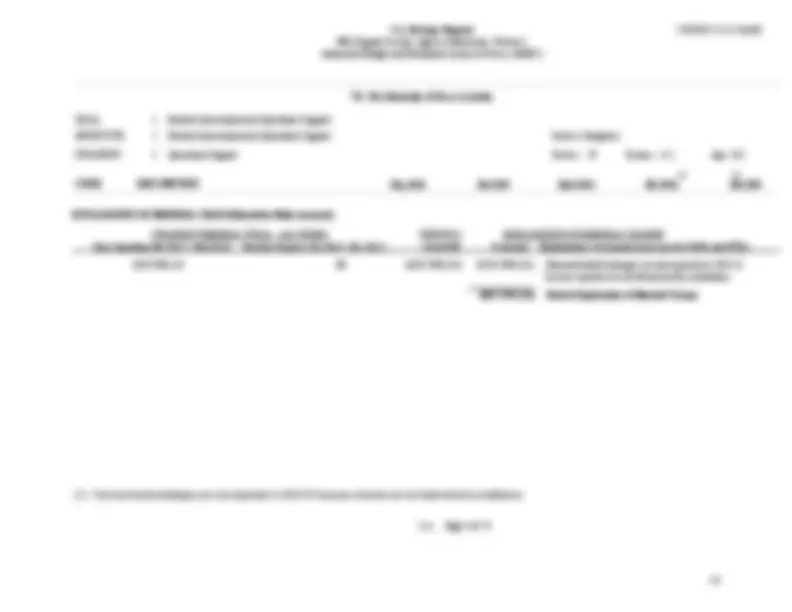
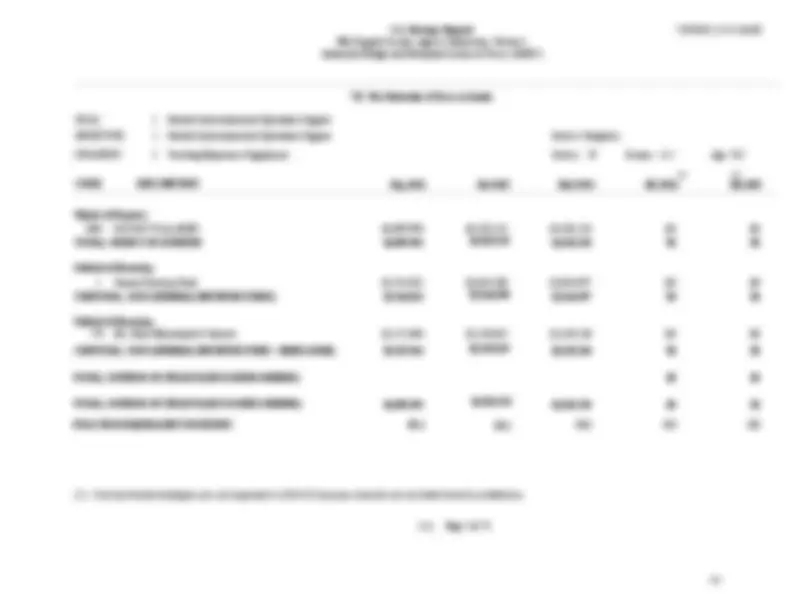
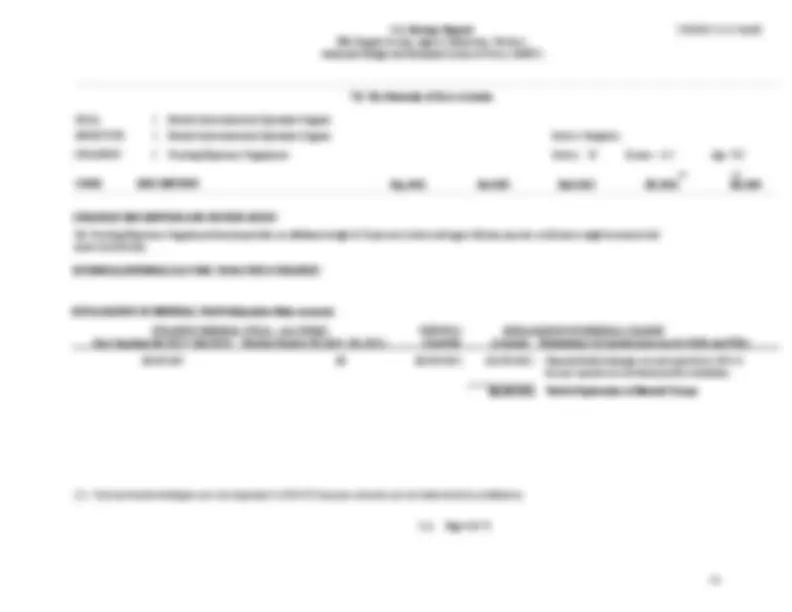
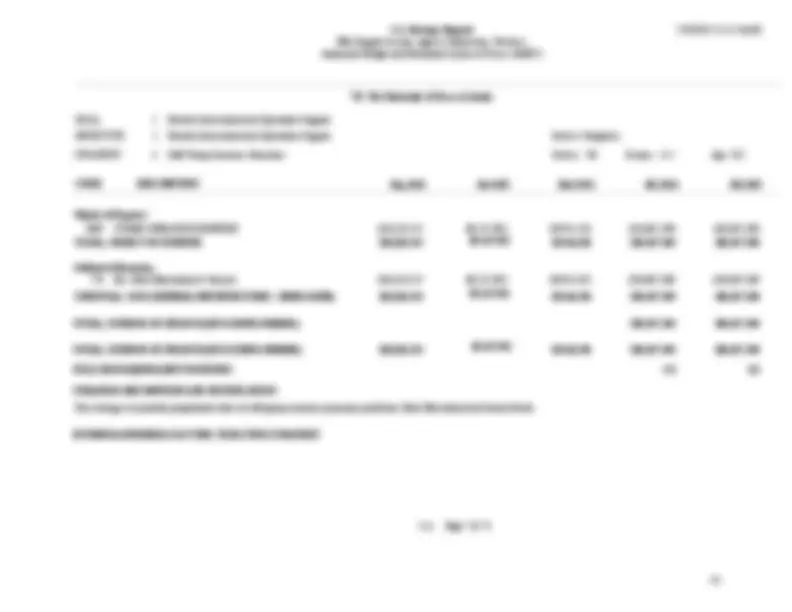
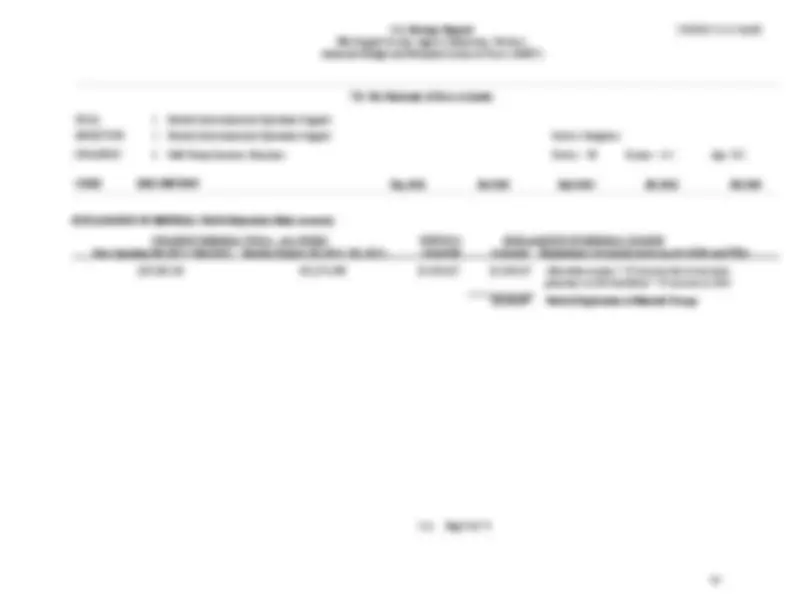
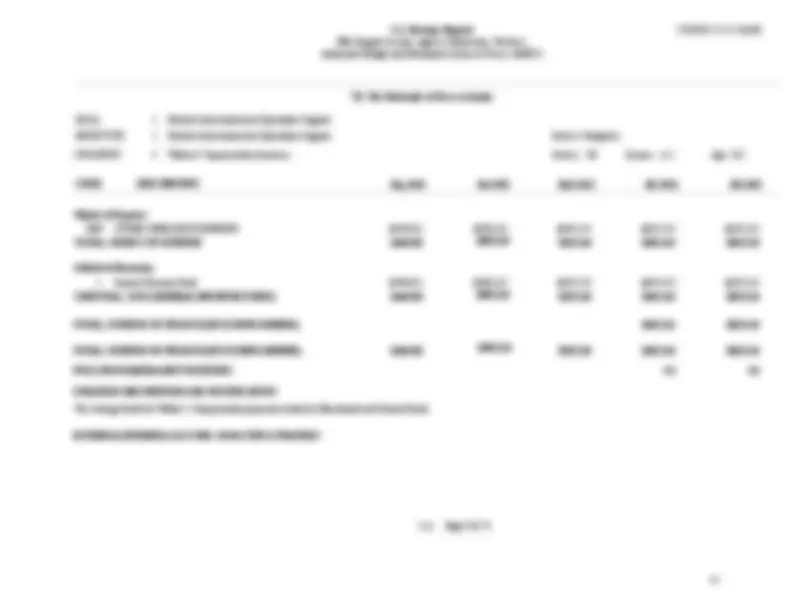
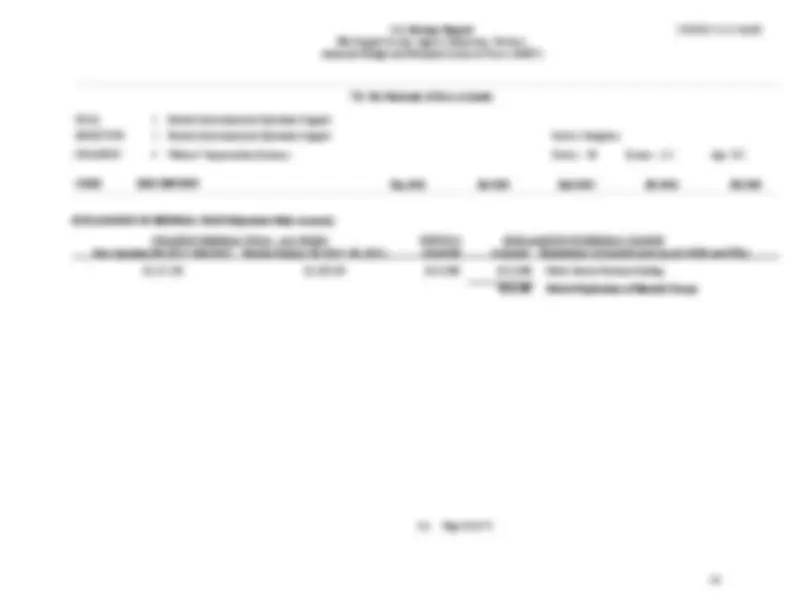
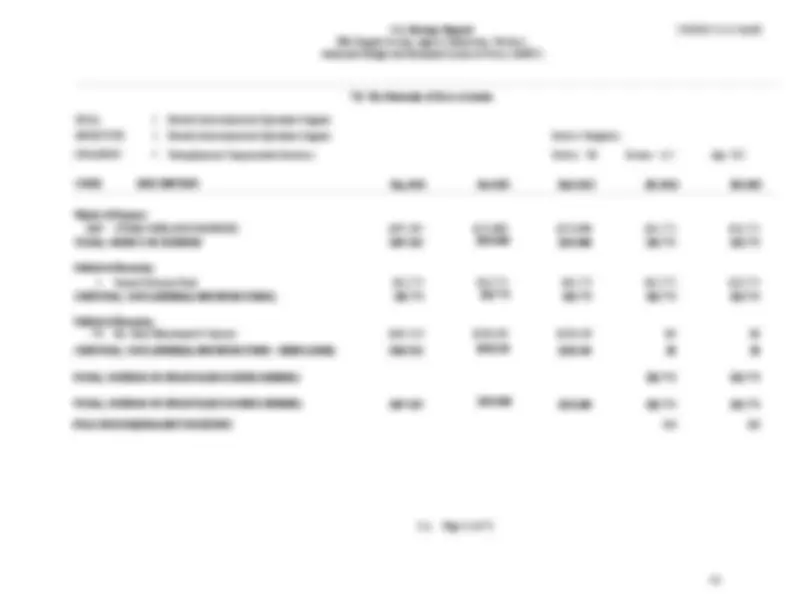
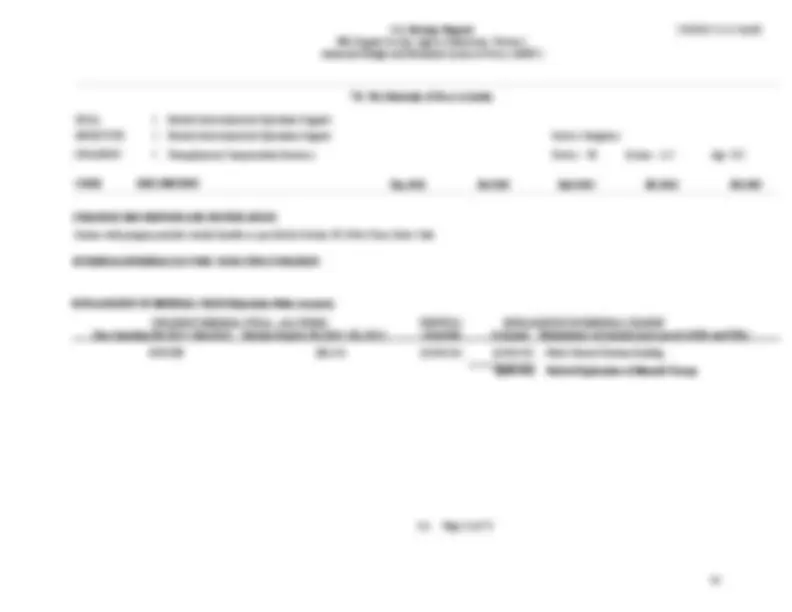
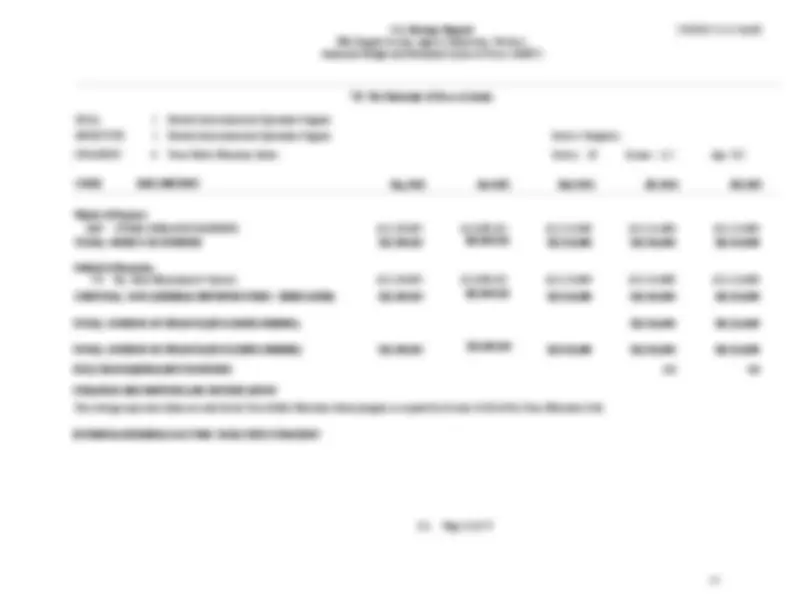
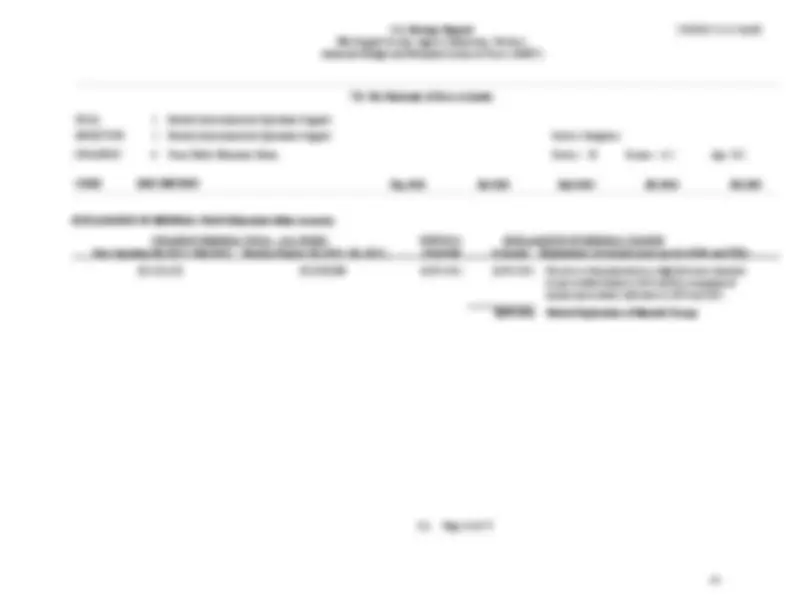
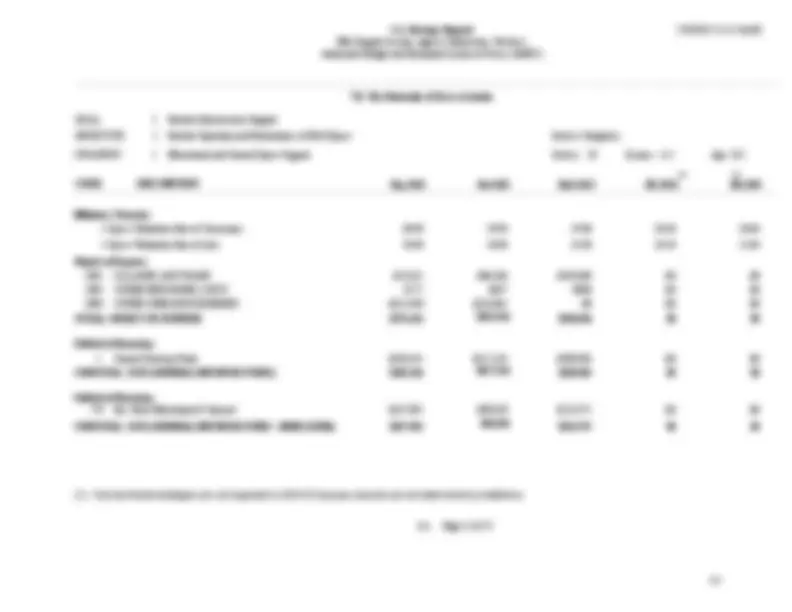
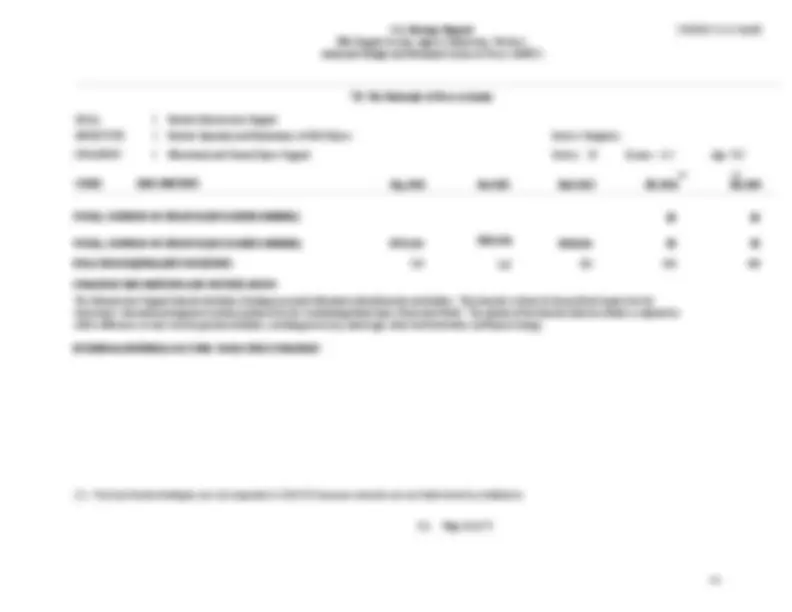
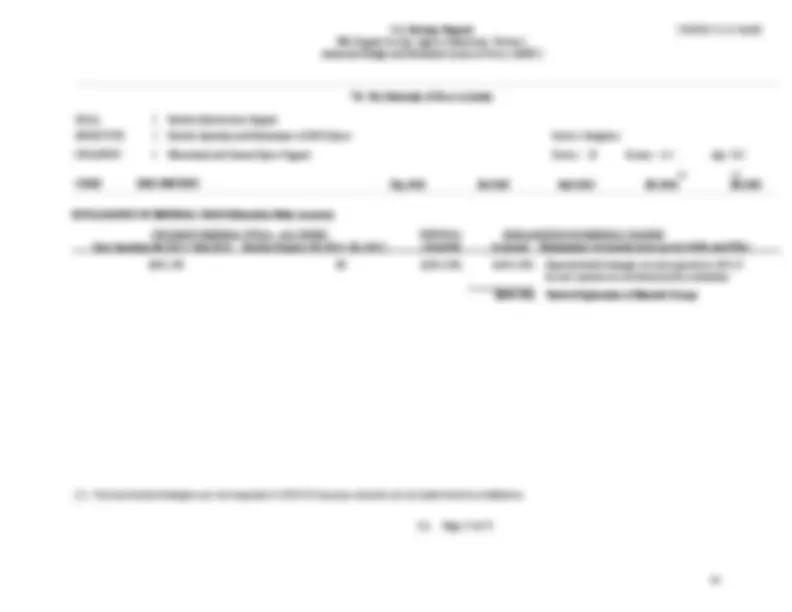
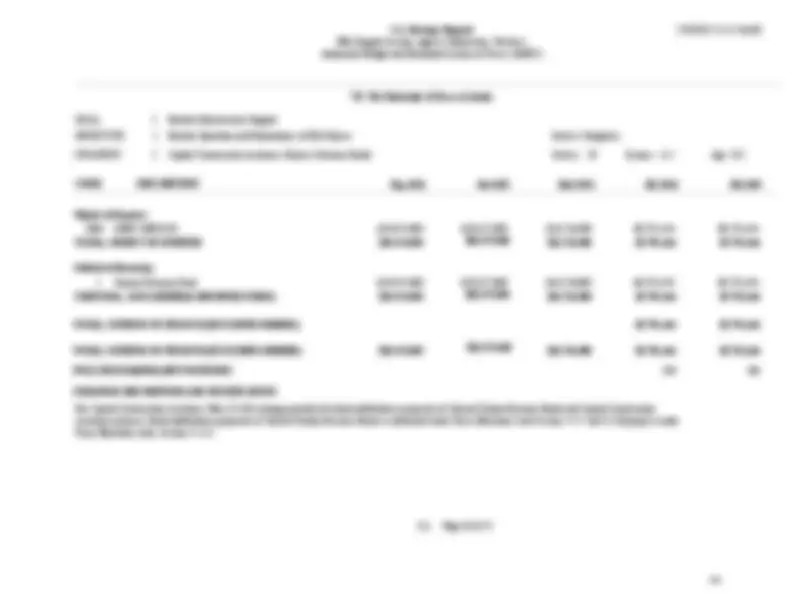
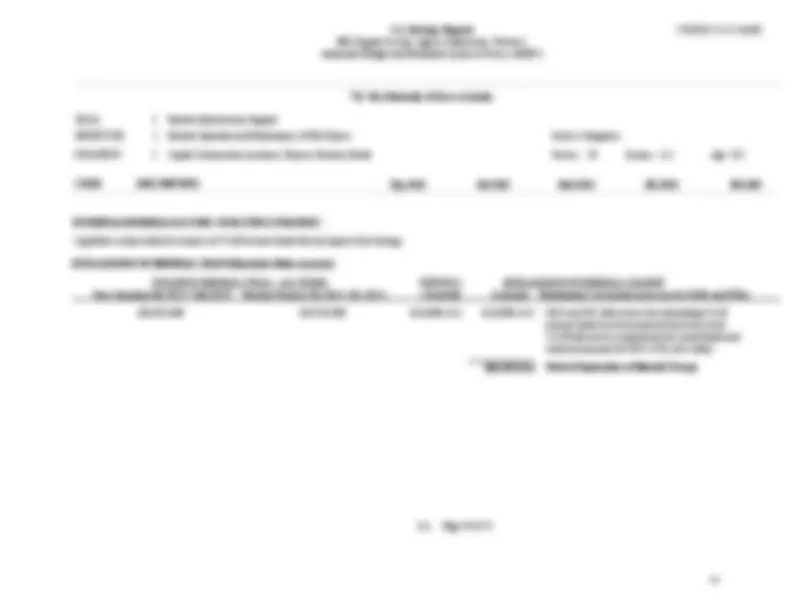
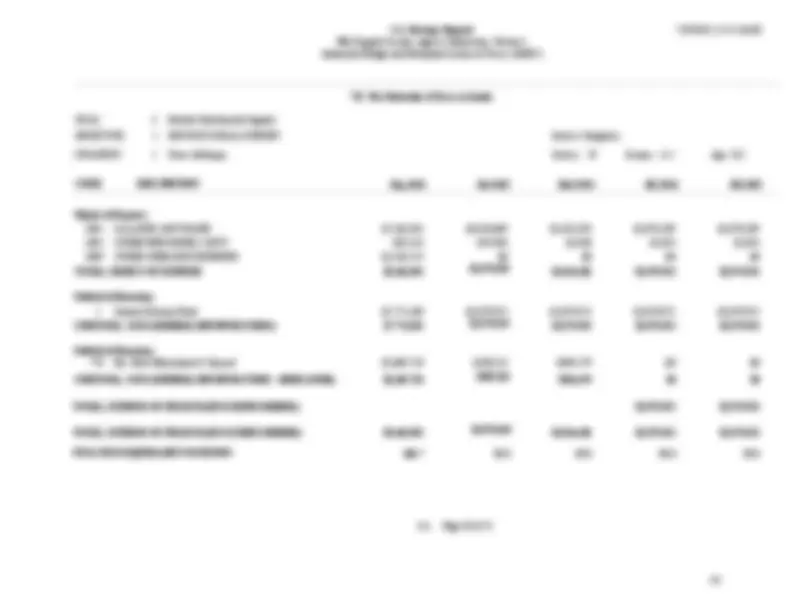
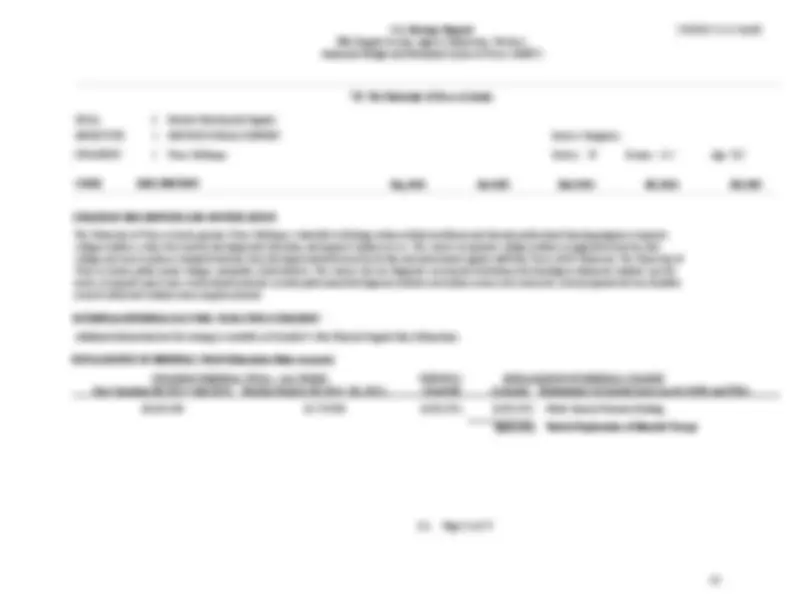
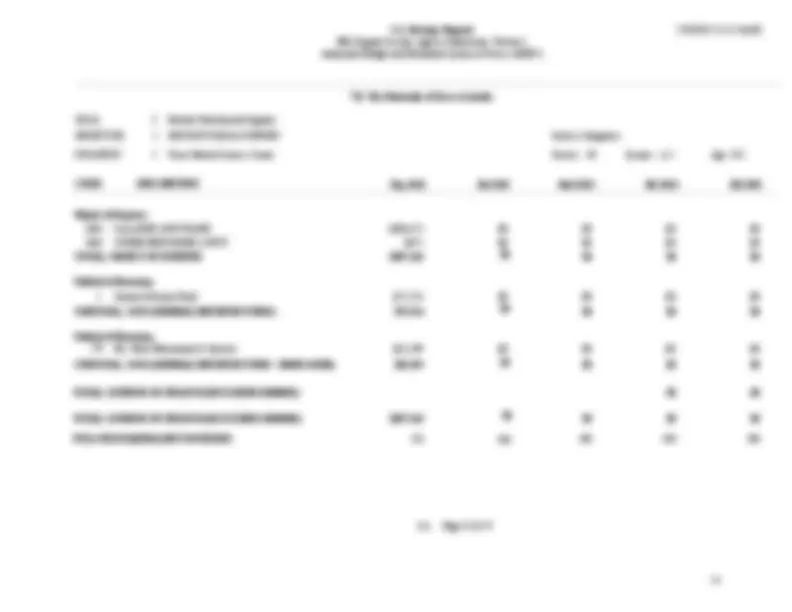
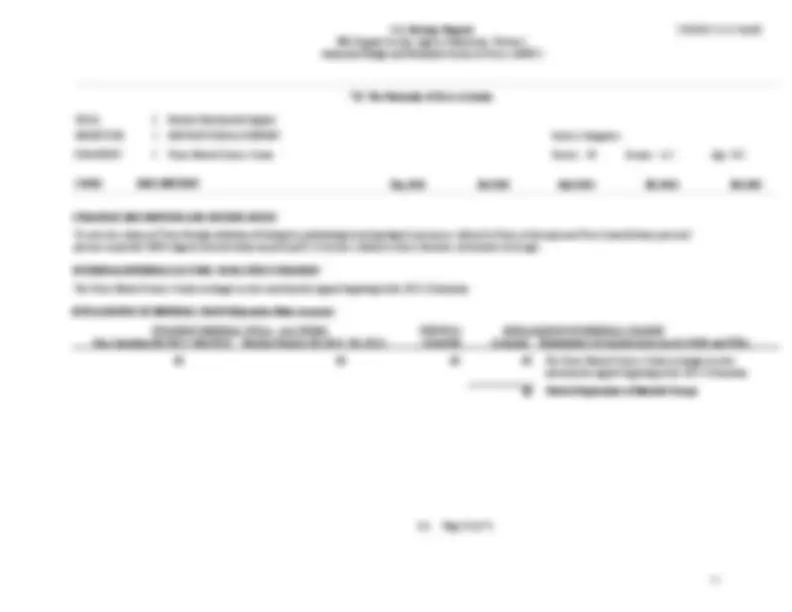
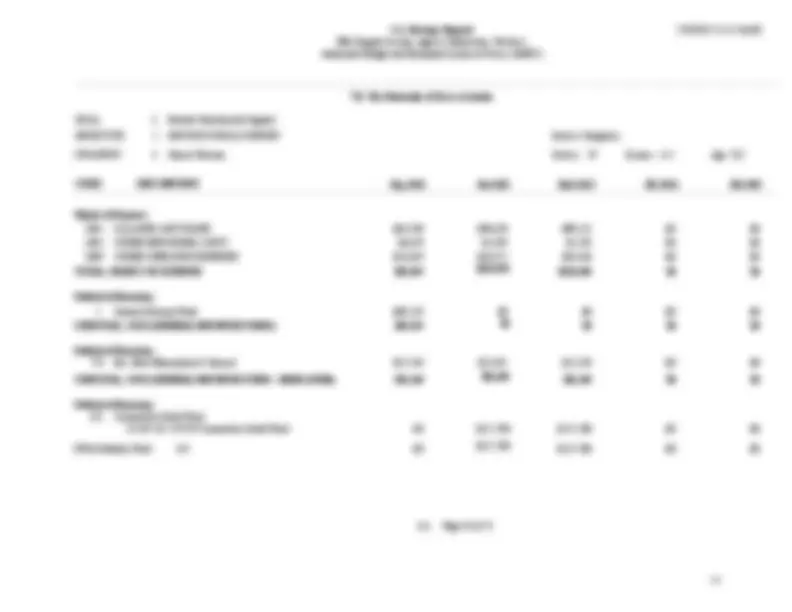
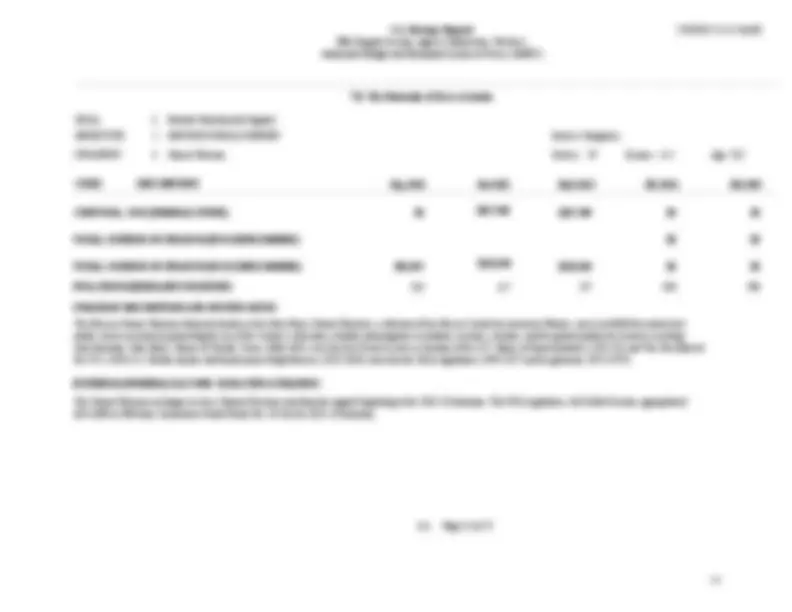
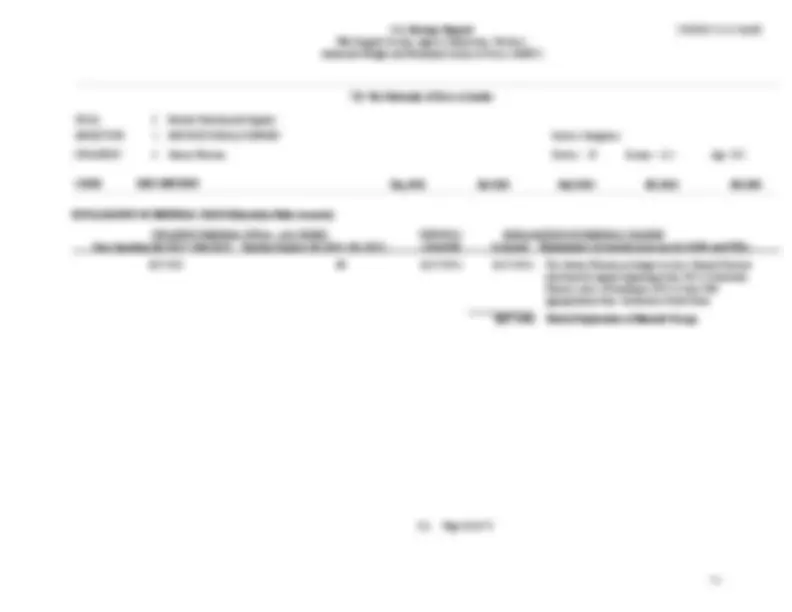
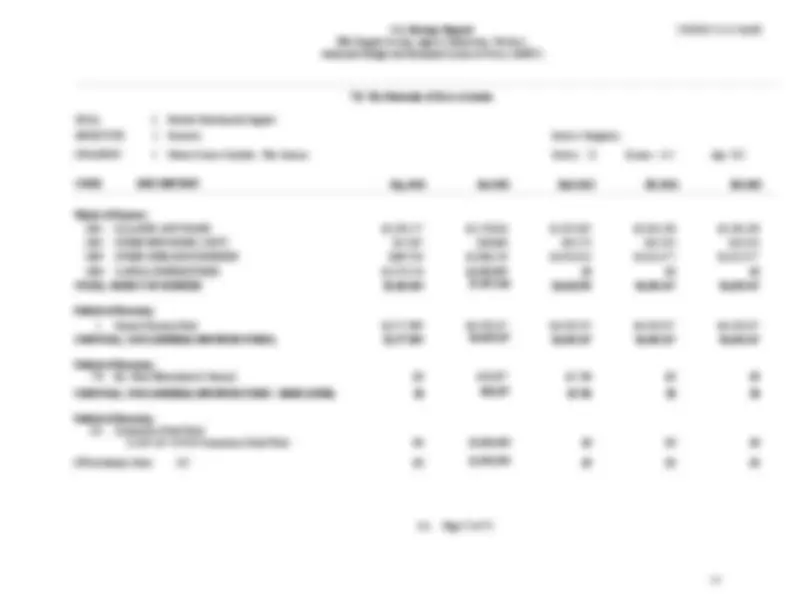
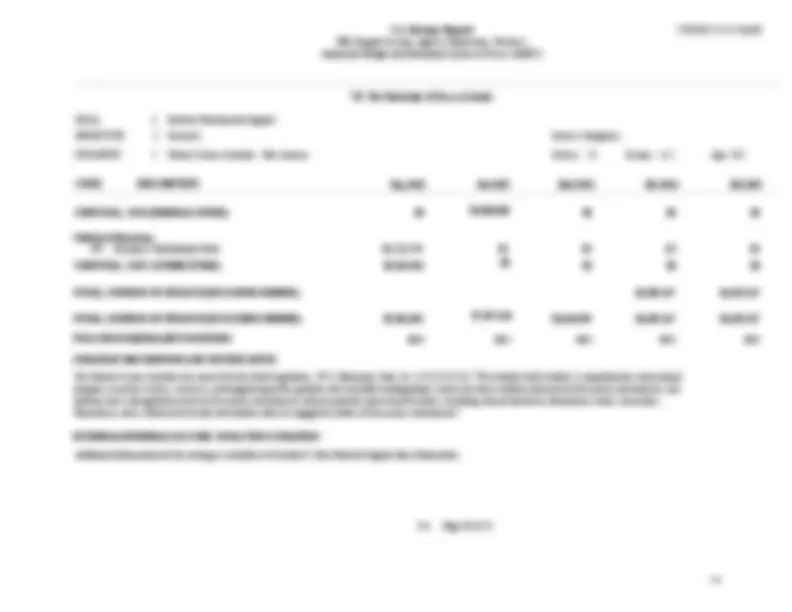
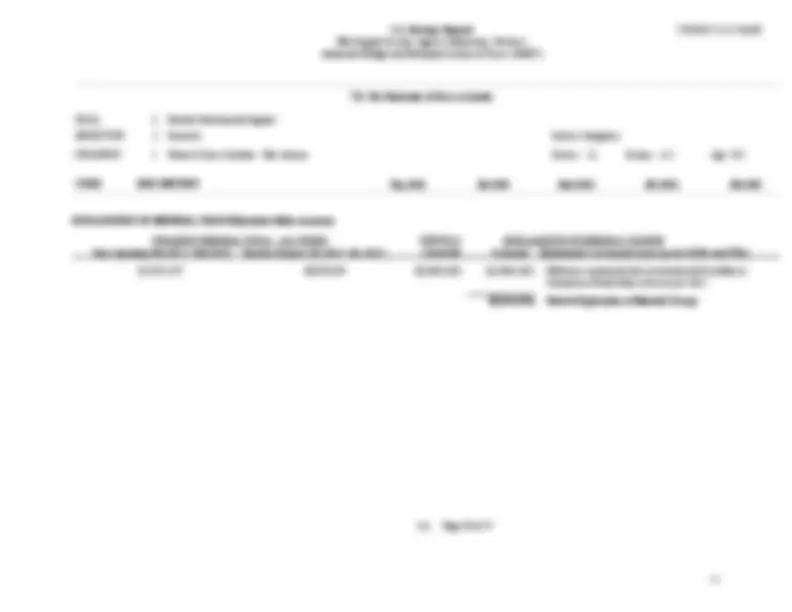
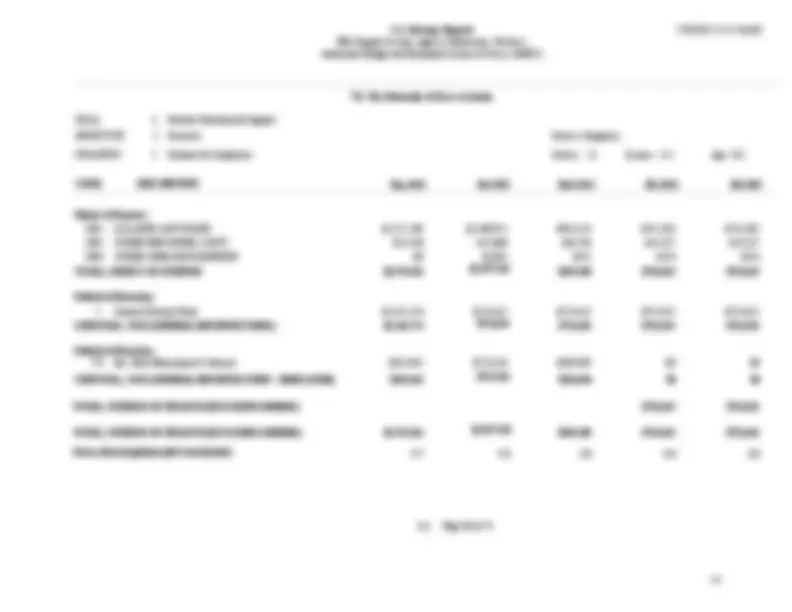
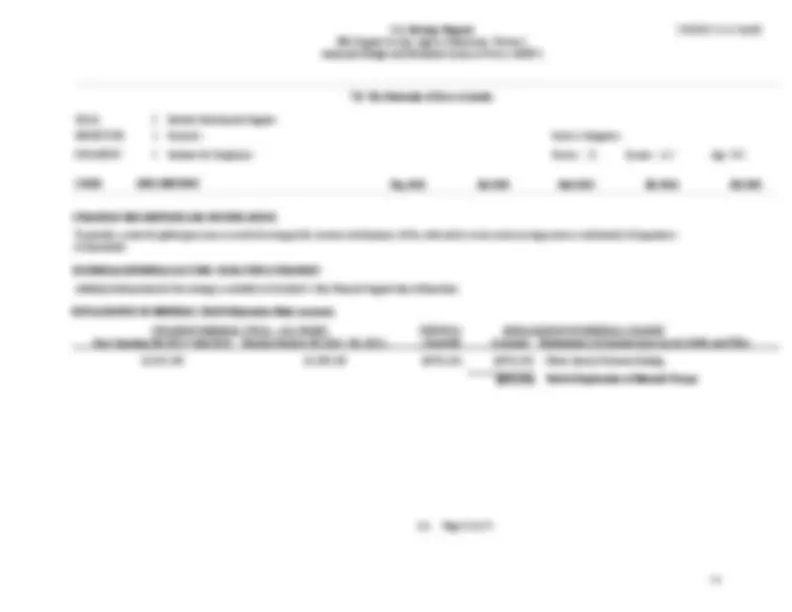
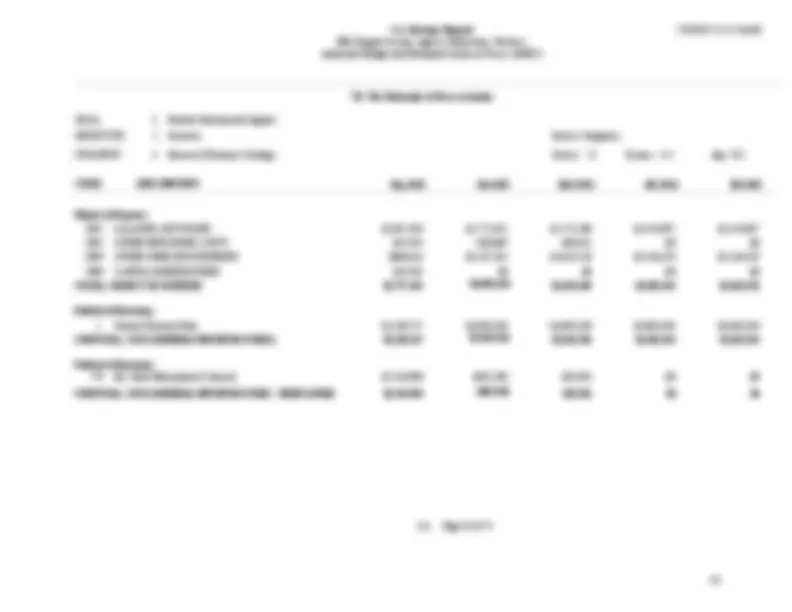
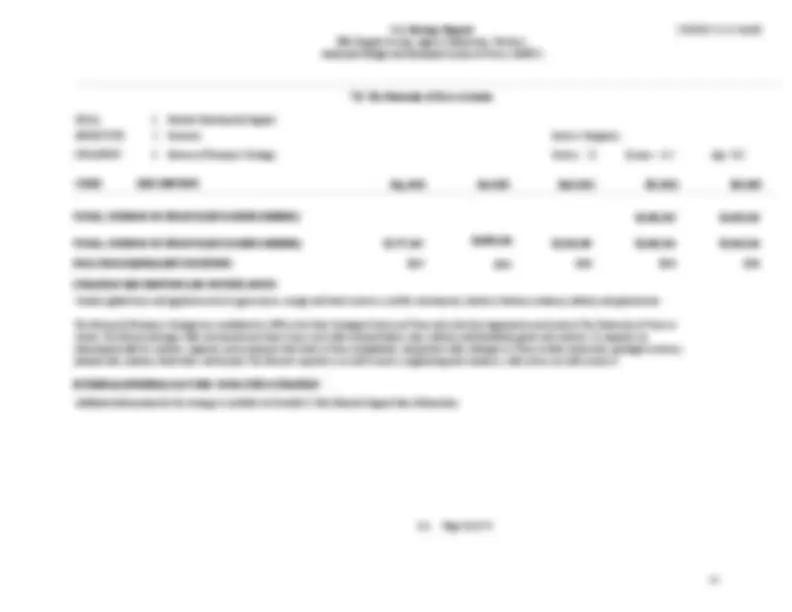
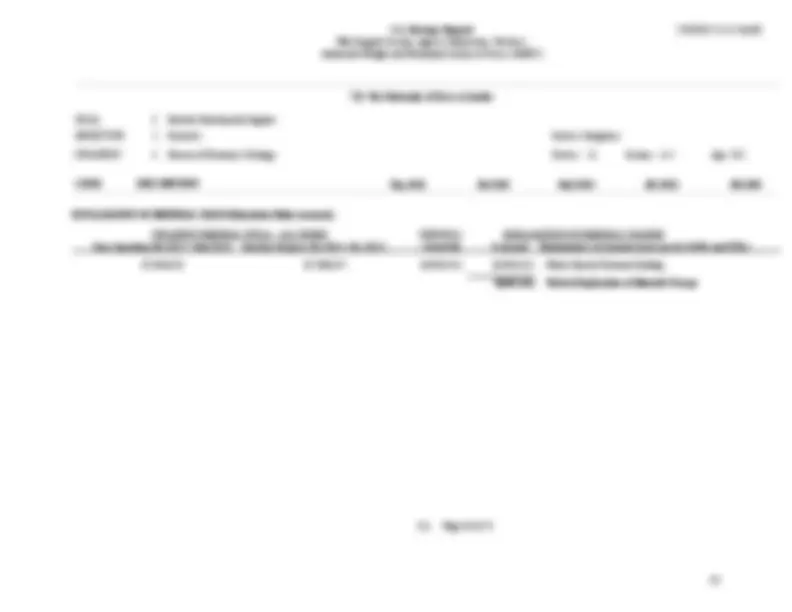
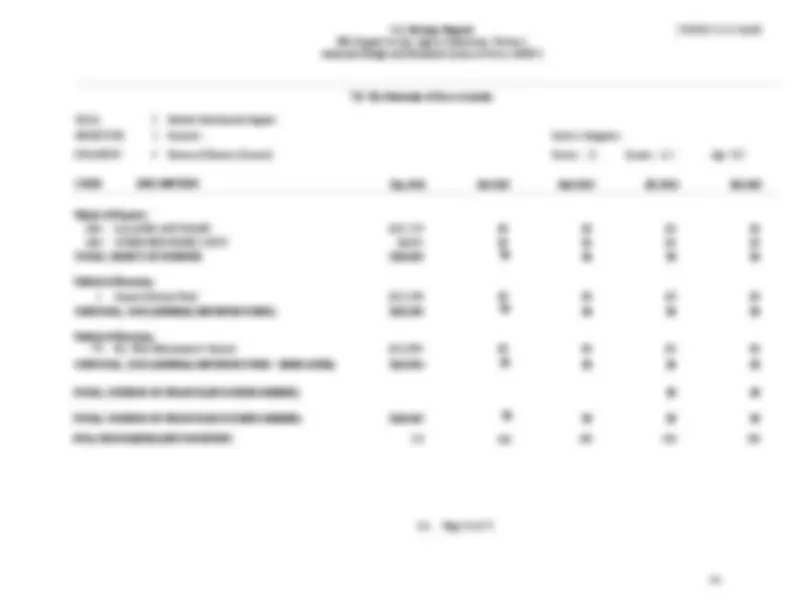
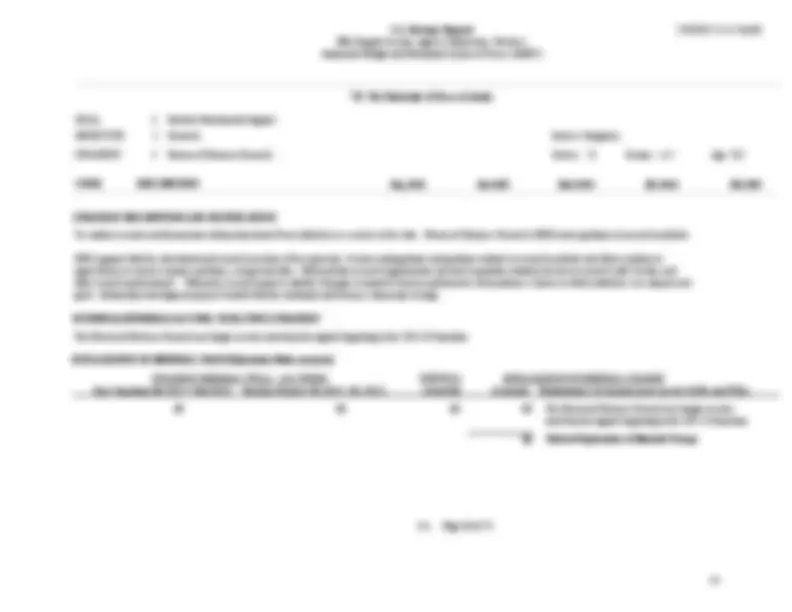
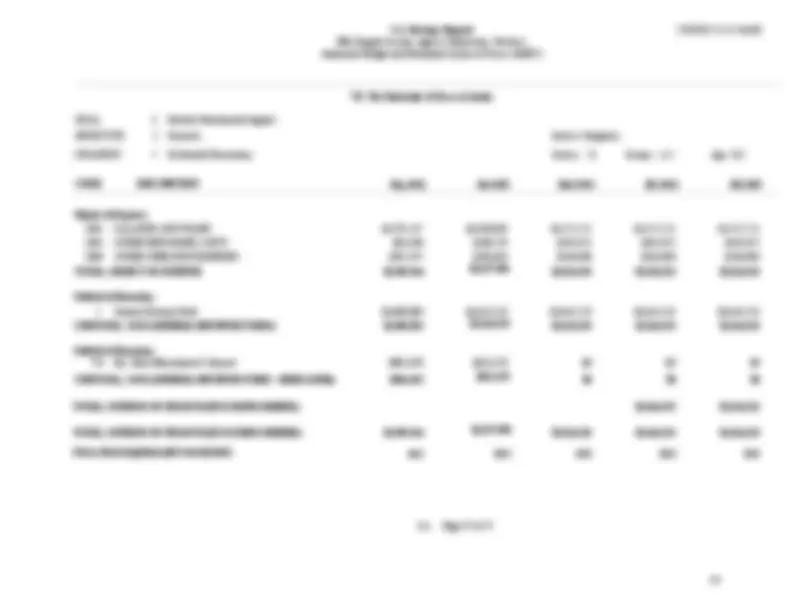
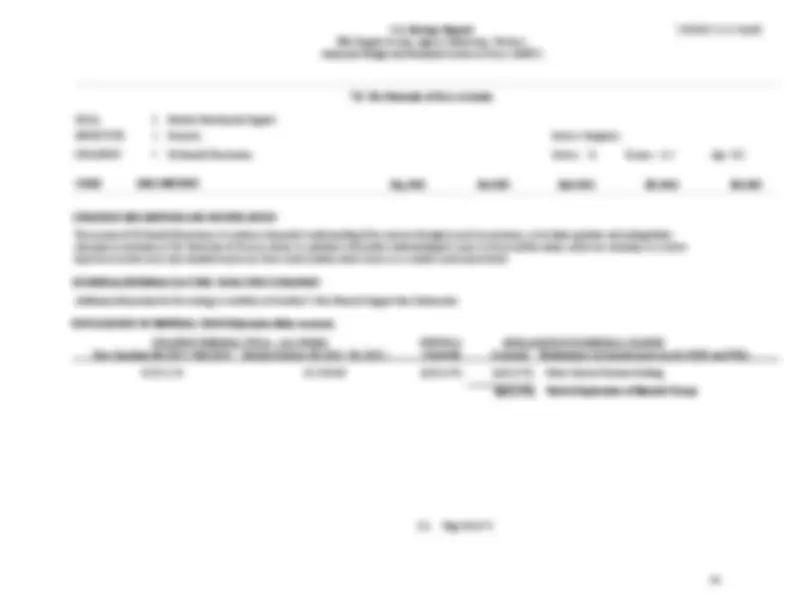
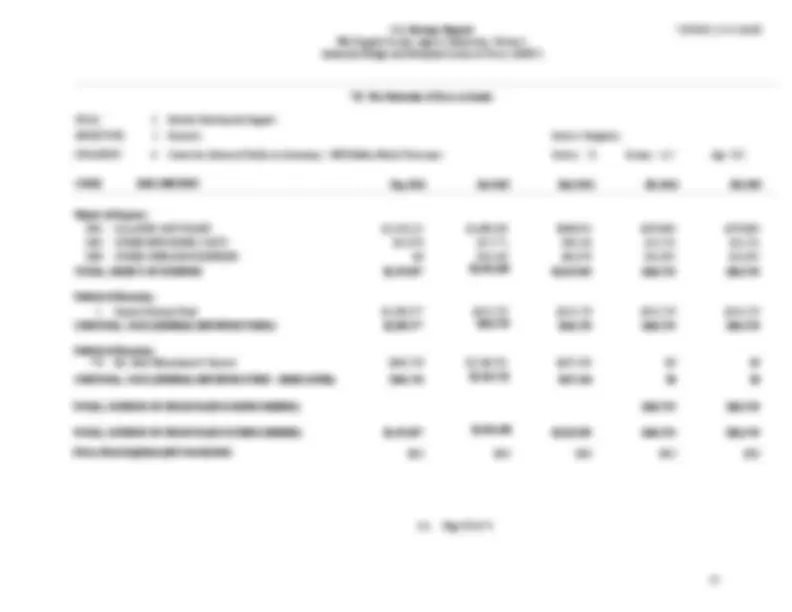
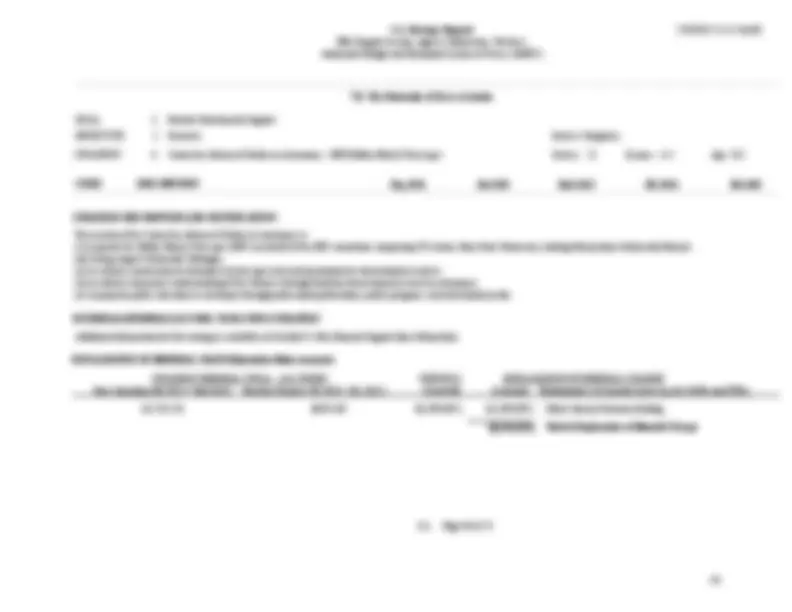
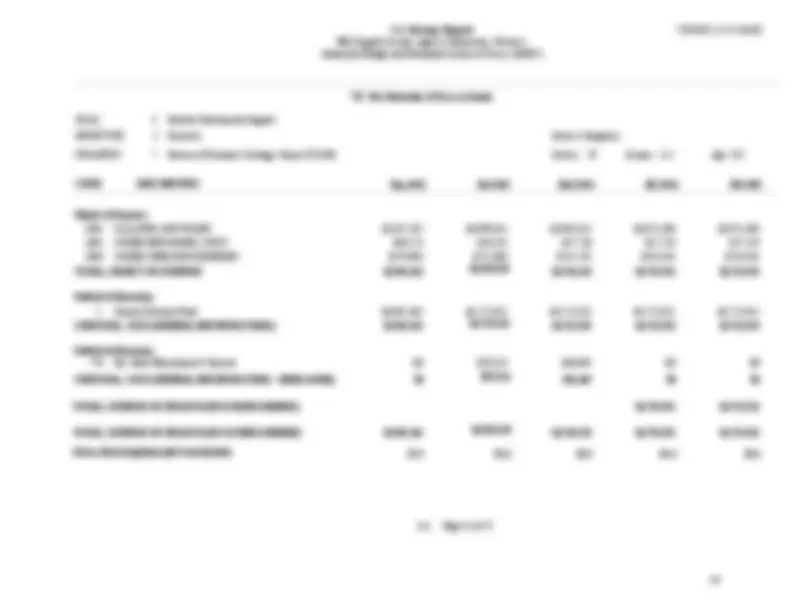
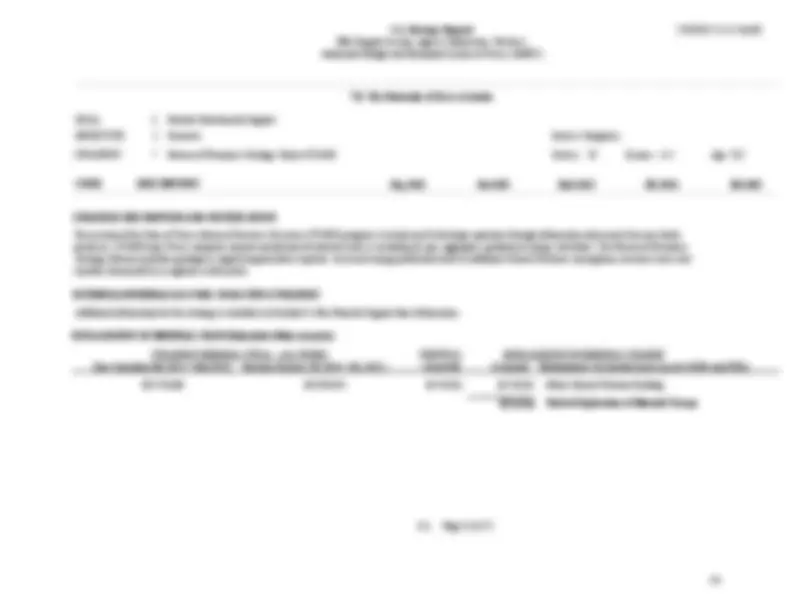
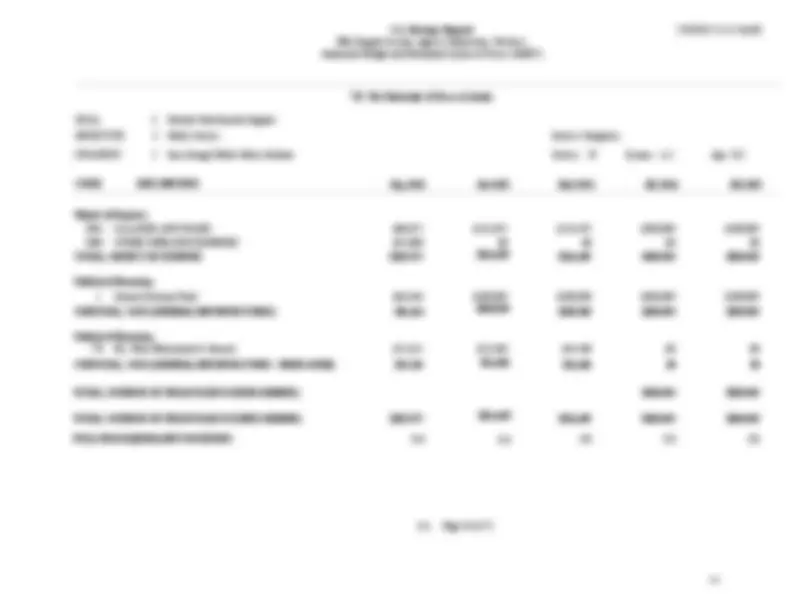
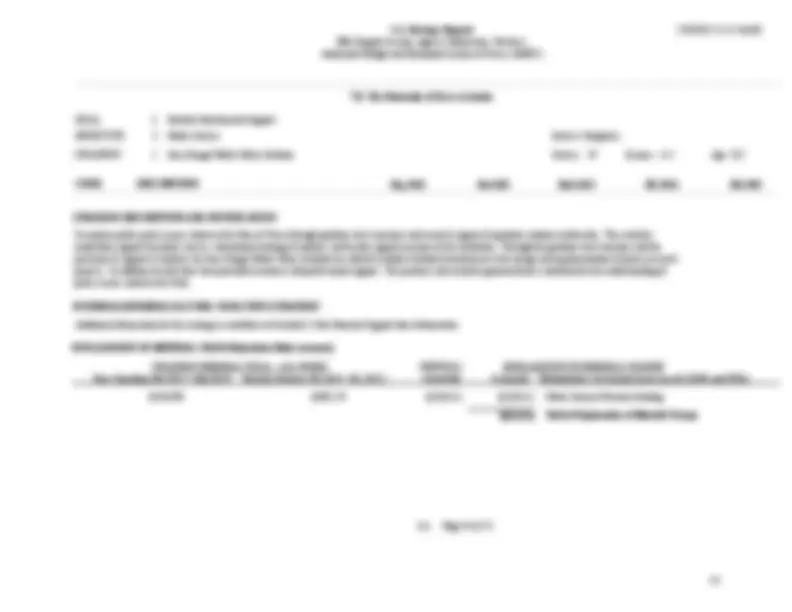
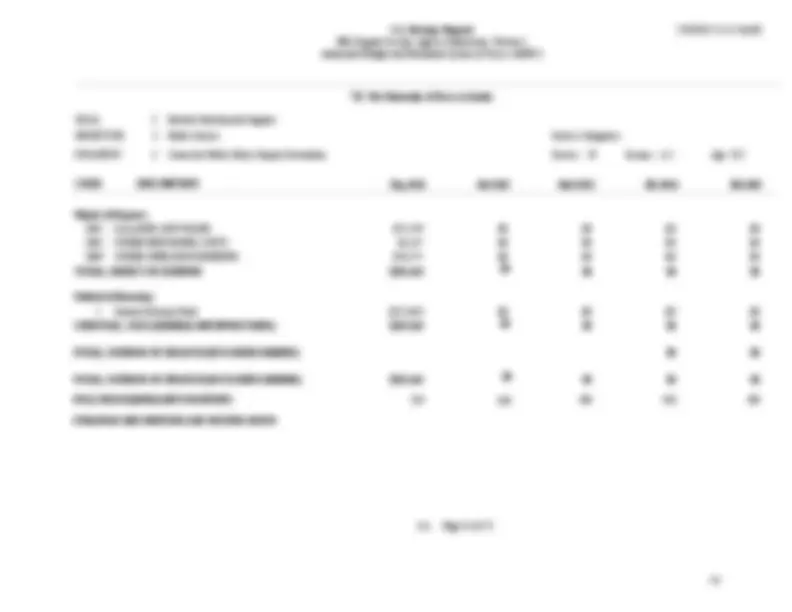


Study with the several resources on Docsity

Earn points by helping other students or get them with a premium plan


Prepare for your exams
Study with the several resources on Docsity

Earn points to download
Earn points by helping other students or get them with a premium plan
Community
Ask the community for help and clear up your study doubts
Discover the best universities in your country according to Docsity users
Free resources
Download our free guides on studying techniques, anxiety management strategies, and thesis advice from Docsity tutors
THE UNIVERSITY OF TEXAS AT AUSTIN. August 2022. Page 2. Page 3. TABLE OF CONTENTS. I. SCHEDULES NOT INCLUDED .
Typology: Exams
1 / 220

This page cannot be seen from the preview
Don't miss anything!





























































































Strategy 3: Bureau of Economic Geology .................................................................................................................................................................................................. 80 Strategy 4: Bureau of Business Research ................................................................................................................................................................................................... 83 Strategy 5: McDonald Observatory ............................................................................................................................................................................................................ 85 Strategy 6: Center for Advanced Studies in Astronomy – HET (Hobby-Eberly Telescope) ...................................................................................................................... 87 Strategy 7: Bureau of Economic Geology: Project STARR ....................................................................................................................................................................... 89 Objective 3: Public Service Special Item Support Strategy 2: Irma Rangel Public Policy Institute .......................................................................................................................................................................................... 91 Strategy 3: Center for Public Policy Dispute Resolution ............................................................................................................................................................................ 93 Strategy 4: Voces Oral History Project....................................................................................................................................................................................................... 95 Strategy 5: Civitas Institute ........................................................................................................................................................................................................................ 97 Objective 4: Institutional Support Special Item Support Strategy 1: Institutional Enhancement ........................................................................................................................................................................................................ 99 GOAL 5: TRUSTEED FUNDS Objective 1: Trusteed Funds Strategy 1: Darrell K Royal Texas Alzheimer’s Initiative ........................................................................................................................................................................ 103 GOAL 6: RESEARCH FUNDS Objective 1: Texas Research University Fund Strategy 1: Texas Research University Fund ............................................................................................................................................................................................ 105 GOAL 7: PROVIDE INSTRUCTIONAL AND OPERATIONS SUPPORT FOR MEDICAL SCHOOL Objective 1: Instructional Programs Strategy 1: Medical Education.................................................................................................................................................................................................................. 107 Strategy 2: Graduate Medical Education .................................................................................................................................................................................................. 110 Objective 3: Operations – Statutory Funds Medical School Strategy 1: Texas Public Education Grants ............................................................................................................................................................................................. 112 GOAL 8: PROVIDE RESEARCH SUPPORT MEDICAL SCHOOL Objective 1: Research Activities Medical School Strategy 1: Research Enhancement Medical School .............................................................................................................................................................................. 114 GOAL 9: PROVIDE INFRASTRUCTURE SUPPORT FOR MEDICAL SCHOOL Objective 1: Operations/Maintenance Med School Strategy 1: E&G Space Support Medical School .................................................................................................................................................................................... 116 GOAL 11: Tobacco Funds Objective 1: Tobacco Earnings for Research Strategy 1: Tobacco Earnings from the Permanent Health Fund for Higher Ed. No. 810....................................................................................................................... 120 B. RIDER REVISIONS AND ADDITIONS REQUEST ................................................................................................................................................................................................... 123
4. EXCEPTIONAL ITEMS
A. E XCEPTIONAL I TEM REQUEST S CHEDULE: Texas Hub for Applied Cybersecurity ...................................................................................................................................................................................................... 126 Texas Digital Molten Salt Reactor ........................................................................................................................................................................................................... 128
Schedules Not Included
Agency Code:
721
Agency Name: The University of Texas at Austin
Prepared By: Date: August 2022
Request Level: Baseline
For the schedules identified below, the University of Texas at Austin either has no information to report or the schedule is not applicable. Accordingly, these schedules have been excluded from the University of Texas at Austin’s Legislative Appropriations Request for the 2020- biennium.
Number Name
1
Automated Budget and Evaluation System of Texas (ABEST)
721 The University of Texas at Austin
88th Regular Session, Agency Submission, Version 1
Administrator's Statement
a 25% increase in enrolled Hispanic FTIC students compared with fall 2019. ROTC enrollments also grew, with 19 Army, 24 Navy and 13 Air Force new enrollments.
Our undergraduate graduation rates continue to improve, setting all-time highs in most categories, as they have since 2011. Below are the increases in our four-year graduation rates from 2017 to 2021:
In fall 2021, graduate enrollment increased 15.5% to 12,245 students. A record number of graduate students enrolled for the first time in the summer and fall 2021 semesters. Graduate applications increased 24%, and new graduate student matriculation grew 36%, adding 4,699 enrollees to the graduate student body. The diversity of the students applying and receiving offers of admission also increased, including more first-generation and underrepresented minority students and greater geographic diversity.
Our faculty members are our biggest investment and resource for both our teaching and research missions. Austin provides a special setting for our work, but Austin’s rapid growth is resulting in a highly competitive market for top talent and placing greater financial strains on individuals and families. To address this challenge, UT Austin is making a new annual recurring investment in our faculty and staff talent of approximately $53 million – the largest recurring commitment to talent ever made by the university – which significantly exceeds recent increases in tuition revenue and state appropriations.
Formula Funding None of the above would be possible without formula support provided by the State of Texas. UT Austin uses the state’s investment of its formula dollars to provide for student instruction, helping to fund faculty salaries and operational costs of the institution’s academic programs. In fiscal year 2023, formula funding from both the General Academic and Health Related formulas will account for 70.5% of state General Revenue appropriated directly to UT Austin. Like many of our fellow institutions, UT Austin is facing extraordinary inflationary and market pressures in a year in which we have held tuition rates flat. We respectfully request an increased state investment in the funding formulas to reflect these cost pressures, which would benefit all of Texas’ institutions of higher education.
II. Place
Texas has the ninth-largest economy in the world and is the second most populous state, drawing modern-day trailblazers who come to pursue new opportunities. Austin, which has long been known as “the live music capital of the world” with a vibrant mix of culture, sports, higher education and politics, is now the fastest-growing major city in the nation. UT Austin is a large part of that growth, as many companies relocate to Texas and to Austin in order to have access to the exceptional talent at the scale that UT provides. In return, to marshal the unique advantages of Texas’ capital city and the dynamic economy of the state, we have launched the UT Austin Seed Fund with an initial investment by the Board of Regents. This internal foundation is designed to foster entrepreneurship, invest in early-stage UT-related companies and drive impact by bringing more innovation to market.
UT Austin’s Dell Medical School (“Dell Med”) is another contributor and asset to the Austin community. Founded in partnership with the greater Central Texas
Page 2 of 6
3
Automated Budget and Evaluation System of Texas (ABEST)
721 The University of Texas at Austin
88th Regular Session, Agency Submission, Version 1
Administrator's Statement
community, and with direct support from the Board of Regents, philanthropists, and Travis County taxpayers, we are carrying out the mission of transforming medical education and healthcare. As Dell Med matures and grows, we would like to explore opportunities at the state level to maximize our impact on healthcare and become a top-tier academic medical center. We are also exploring an extended partnership with UT MD Anderson, starting with an effort to have great impact in cancer research by combining the respective expertise of each institution.
Ascension Seton operates Dell Med’s primary teaching hospital, and through this partnership we have successfully recruited top doctors and training specialists to Dell Medical School, infusing the Central Texas region with greater access to world-class health care. The number of medical education residents and fellows continued to increase, up to 346 this past academic year, providing over 730,000 hours of care at more than 80 clinics and hospitals across the region; and the number of residency and fellowship programs has more than doubled to 46 in the last two years. Dell Med is directly and indirectly connected to attracting 415 new doctors to Austin since 2014, and of the 306 regular faculty employed by Dell Med, 42% specialize in areas of need identified by Central Health’s Equity-Focused Service Delivery Strategic Plan. As Texas’ need for doctors increases over time, Dell Med’s ability to graduate and retain these new physicians will significantly contribute to the State’s health care landscape.
This spring, Dell Med launched a fully integrated heart care model led by Dr. Charles D. Fraser, the inaugural executive director of the new Institute for Cardiovascular Health. Dr. Fraser's team recently performed the first pediatric transplant procedure of its kind in Central Texas, and will expand its work to adult cardiovascular care through this institute.
Finally, in the area of brain development and mental health care, Dell Med has established a Child Psychiatry Access Network as part of the statewide Texas Child Mental Health Care Consortium and is actively working with the State’s Health and Human Services Commission to improve the quality of care in the Austin State Hospital catchment area.
III. Experiences
To succeed as the highest-impact public research university, UT Austin is creating and delivering life-changing experiences. To offer these experiences to as many Texan students as possible, the University is committed to making it affordable. For the 2022-23 academic year, UT Austin held tuition rates flat from the prior year.
In addition, UT Austin is addressing affordability through two primary programs:
Since 2014, UT Austin has continued to increase the number of students graduating with no student loan debt from 45% to 60% according to the most recent data. Finally, the University thanks the state for its $31.4 million annual investment in TEXAS Grants, and strongly supports continued and expanded funding for this important financial aid program.
Page 3 of 6
4
Automated Budget and Evaluation System of Texas (ABEST)
721 The University of Texas at Austin
88th Regular Session, Agency Submission, Version 1
Administrator's Statement
manufacturing, secure the supply chain, ensure national security, and educate the next generation of industry innovators in Texas. Additionally, UT Austin received capital construction assistance project bonds totaling $112 million in fall 2021, which the Board of Regents approved for modernizing semiconductor fabrication facilities at the J.J. Pickle Research Campus. This facility will enable the University and the State of Texas to effectively compete for a share of $13 billion in federal CHIPS Act funding and potentially cement Texas as a national leader in the semiconductor industry. As of the August submission deadline for appropriations requests, Congress has just passed the CHIPS Act and implementation details are still to be determined and announced. UT Austin's Legislative Appropriations Request may be updated in October to reflect a request for matching funding from the state to maximize our competitive position for federal funds, similar to investments being made by New York and other states.
The State supports research in multiple ways, including through the Texas Research University Fund (“TRUF”), non-formula support, CPRIT and the Governor’s University Research Initiative. These state funds make recruiting top-level talent and building world-class facilities possible. These dollars then have the potential to translate into commercial opportunities, new technologies and other forms of innovation that benefit Texas and the world beyond, and UT Austin strongly supports the continuation and enhancement of these state investments.
In the coming session UT Austin seeks to partner with the State in three areas where we are uniquely poised to tackle some of the most important global challenges.
Baseline Request
For the coming 2024-25 biennium, UT Austin’s baseline request is for 100 percent of base 2022-23 funding with the exception of debt service.
Exceptional Items
Our three exceptional item requests align with our three research areas of impact.
Texas Hub for Applied Cybersecurity. Cybersecurity threats, and the shortage of professionals to protect Texas institutions from them, is a state and national emergency. With $9.5 million in one-time funding and $10.7 million in recurring support, UT Austin would create the Texas Hub for Applied Cybersecurity to create a diverse pipeline of the most highly trained and capable cybersecurity professionals available in the market for years come. This program will offer a minor in Applied Cybersecurity for traditional students, micro-certifications for non-traditional students, and a robust apprenticeship in the UT Austin Information Security Office, which is one of the largest cybersecurity service providers for Higher Education in the United States. Investing in this program will not only help students, but it will directly serve the UT System, improve overall cybersecurity for the State of Texas, and materially impact the nation’s cybersecurity posture. Additionally, the one-time portion of the funding request may be well-suited for available federal Coronavirus State and Local Fiscal Recovery Funds (SLFRF).
Texas Digital Molten Salt Reactor. UT Austin requests a one-time state investment of $20 million to ensure that Texas becomes a leader in the design, development,
Page 5 of 6
6
Automated Budget and Evaluation System of Texas (ABEST)
721 The University of Texas at Austin
88th Regular Session, Agency Submission, Version 1
Administrator's Statement
innovation, and commercialization of molten salt reactors (MSRs). MSR technology would provide long- term benefits to Texas and the country, including flexible, reliable, on-demand electricity and water desalination. State funding would kickstart proof-of-concept research and development of digital versions of every MSR component, and position UT Austin and its Texas partners to win a share of $100 million in annual federal funding and help Texas realize its potential as a leader in rapid deployment of reliable nuclear energy.
Long COVID Research at Dell Med. UT Austin requests a one-time investment of $4 million in either available federal SLFRF funding, or state funding, to support research into the underlying nature of and potential treatments for long COVID. The initiative would expand the Long-COVID clinic started in 2020 by the University of Texas Dell Medical School and the Austin Department of Public Health that has seen over 1,000 patients and collected clinical data on more than 13,000 COVID-19 patients hospitalized in Austin. The program will establish strict protocols to coordinate the evaluation of patients, specimen collection and analysis, and initialization of clinical research, all so that this collaborative approach can be easily replicated at additional clinical sites throughout Texas.
Facilities Needs
If the 88th Legislature considers authorizing Capital Construction Assistance Projects, UT Austin would request CCAP support for the renovation of the Engineering Discovery Building. This project includes the design and construction of a new Engineering Discovery Building (EDB) as a replacement for the existing Chemical & Petroleum Engineering (CPE) building, which was built in 1986. The EDB will contain approximately 214,189 gross square feet of both classroom and research space, and support research within the Cockrell School of Engineering and serve as the home for two departments: the Hildebrand Department of Petroleum and Geosystems Engineering and the McKetta Department of Chemical Engineering. Incorporating flexible and reconfigurable research labs, integrated teaching labs and classrooms, and collaborative areas for students and faculty, this project will further support student and faculty recruitment, development and retention while also providing the programs with the facilities necessary to keep these Cockrell School of Engineering programs competitive with their peers.
Many buildings on the UT Austin campus are over 100 years old or quickly approaching the century mark. To continue delivering innovative instruction and engaging in cutting-edge research, it is critical for the University to revitalize its learning and lab spaces. Additionally, maintaining all campus buildings to ensure they function safely and effectively for students, faculty and staff is key to our mission, and important to mitigating escalating future costs. However, state funding for UT Austin, like other institutions of higher education, has not kept pace with the growing deferred maintenance needs on campus. UT requests the legislature consider a state funding allotment to support higher education deferred maintenance costs, to secure its investment in the state’s universities and to avoid costlier facility needs in the future.
Background Checks
The University conducts criminal background checks on applicants for vacant security-sensitive positions on a post- offer/pre-hire basis pursuant to Section 51.215 of the Education Code as amended. Because of ease of access to students, The University has declared all its positions as security-sensitive.
Conclusion
The University of Texas has launched an ambitious, 10-year Strategic Plan to set us on the course to become the world’s highest impact public research institution. Our state funding requests in the areas of Technology and Society, Energy and Environment, and Health and Well-being, represent unique opportunities for the State of Texas to partner with its flagship university to make substantial progress toward this goal. The University respectfully requests that the State continue its strategic investments in UT Austin, and we are ready to work with State leadership during this legislative session to meet new challenges and to build a stronger Texas together.
Page 6 of 6
7
The University of Texas at Austin Descriptions of Functional Units
9
10
Budget Overview - Biennial Amounts 88th Regular Session, Agency Submission, Version 1 Automated Budget and Evaluation System of Texas (ABEST) 721 The University of Texas at Austin Appropriation Years: 2024-
ALL FUNDS 2022-23 2024-25 2022-23 2024-25 2022-23 2024-25 2022-23 2024-25 2022-23 2024-25 2024-
EXCEPTIONAL ITEM GENERAL REVENUE FUNDS GR DEDICATED FEDERAL FUNDS OTHER FUNDS FUNDS
Goal: 6. Research Funds 6.1.1. Texas Research University Fund 66,430,842^ 66,430, Total, Goal 66,430,842 66,430,
Goal: 7. Provide Instructional and Operations Support for Medical School 7.1.1. Medical Education 16,178,438^ 2,247,403^ 18,425, 7.1.2. Graduate Medical Education 4,083,396^ 4,083, 7.3.1. Texas Public Education Grants 378,819^ 378,000^ 378,819^ 378, Total, Goal 20,261,834^ 2,626,222^ 378,000 22,888,056^ 378,
Goal: 8. Provide Research Support Medical School 8.1.1. Research Enhancement Med School
3,658,314 3,658,
Total, Goal 3,658,314 3,658,
Goal: 9. Provide Infrastructure Support for Medical School 9.1.1. E&G Space Support Medical School
4,513,948 4,513,
Total, Goal 4,513,948 4,513,
Goal: 10. Provide Non-formula Support for Medical School 10.1.1. Exceptional Item Request 4,000, Total, Goal 4,000,
Goal: 11. Tobacco Funds 11.1.1. Tobacco-Permanent Health Fund 2,308,734^ 2,333,164^ 2,308,734^ 2,333, Total, Goal 2,308,734^ 2,333,164 2,308,734^ 2,333,
Total, Agency 645,891,850 115,799,312 230,724,707 46,780,400 3,235,000 2,608,734 2,633,164 882,460,291 165,212,876 48,296, Total FTEs 5,857.4^ 5,857.4 100.
Page 2 of 2
12
Automated Budget and Evaluation System of Texas (ABEST)
Goal / Objective / STRATEGY (^) Exp 2021 Est 2022 Bud 2023 Req 2024 Req 2025
88th Regular Session, Agency Submission, Version 1
721 The University of Texas at Austin
2.A. Summary of Base Request by Strategy
1 Provide Instructional and Operations Support
1 Provide Instructional and Operations Support
2 Provide Infrastructure Support
1 Provide Operation and Maintenance of E&G Space
(1) - Formula funded strategies are not requested in 2024-25 because amounts are not determined by institutions.
2.A. Page 1 of 8
13